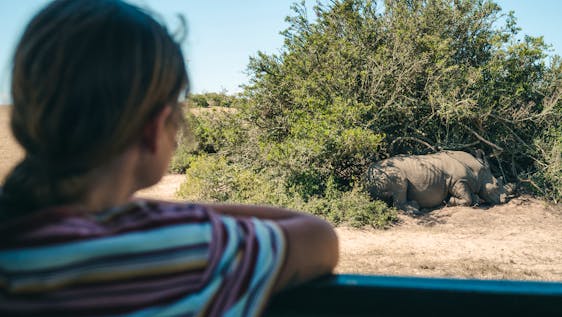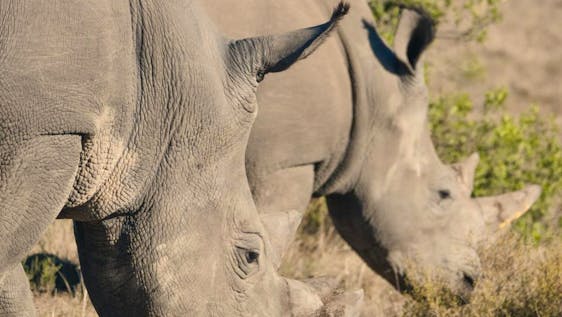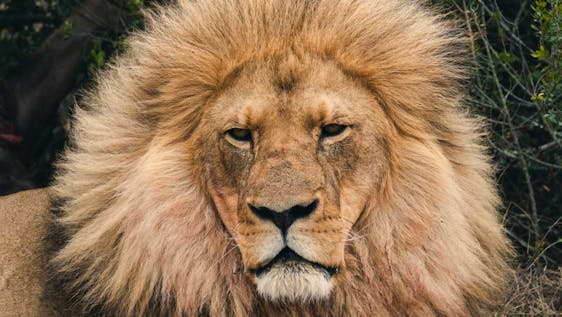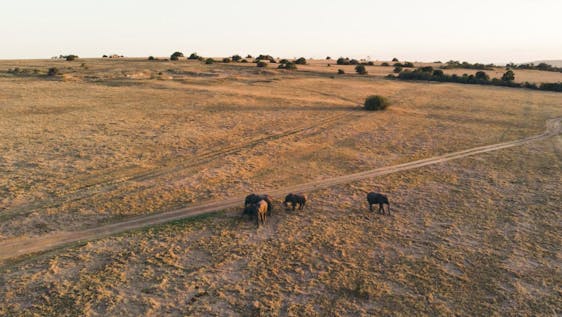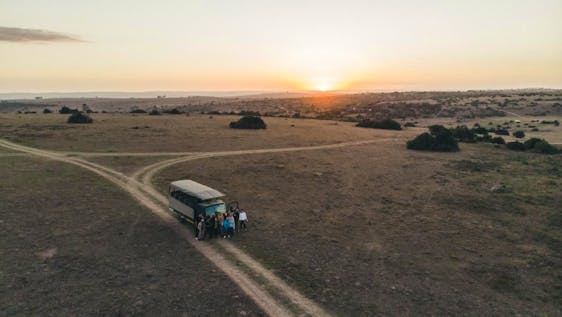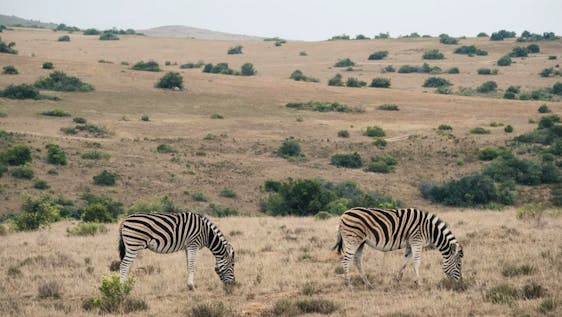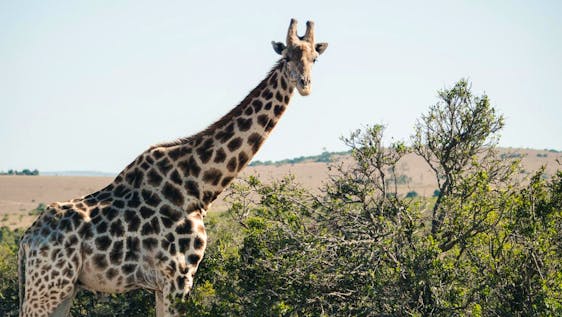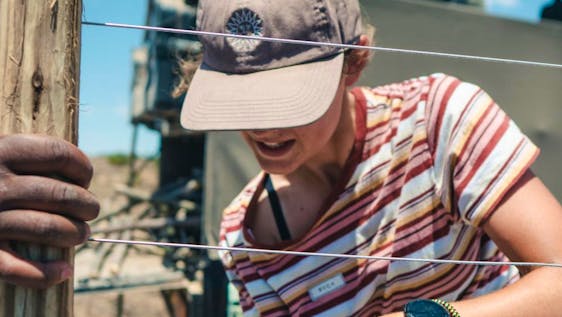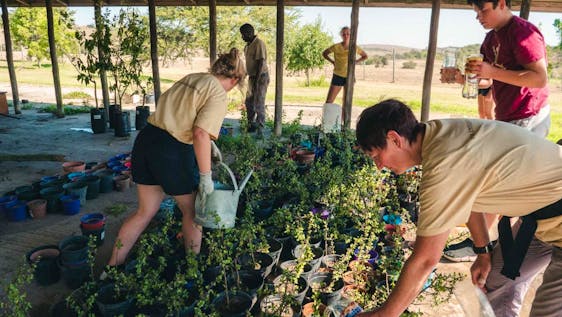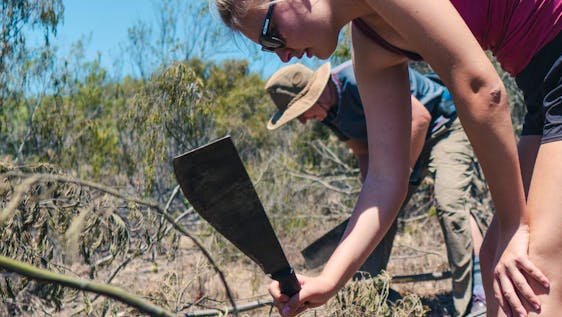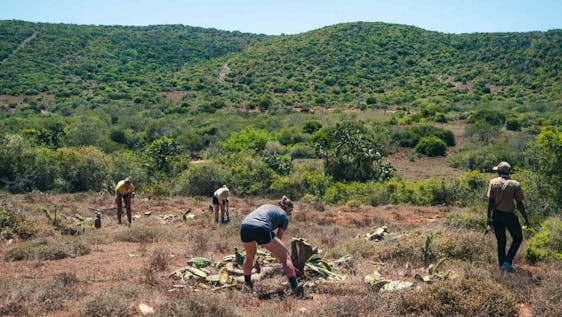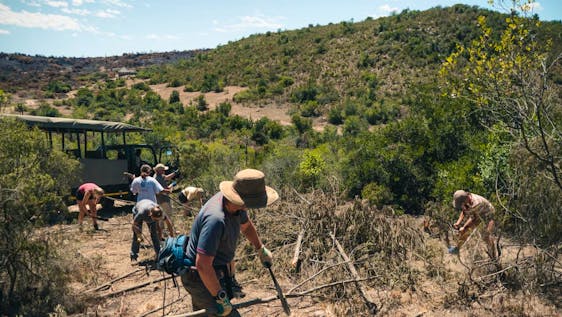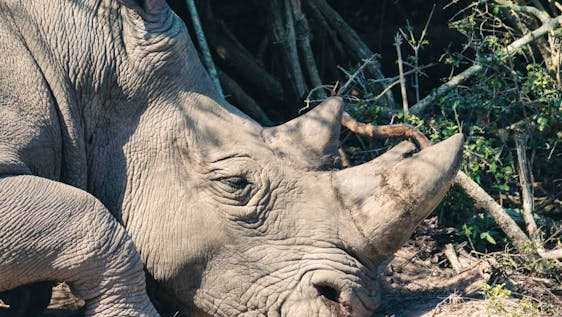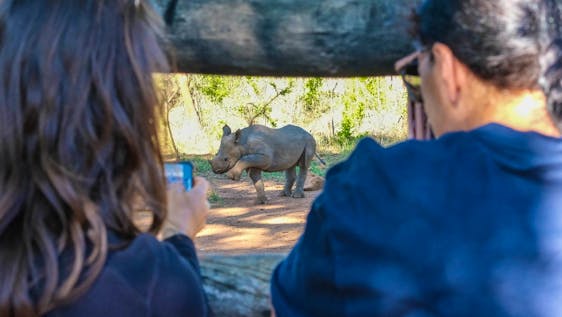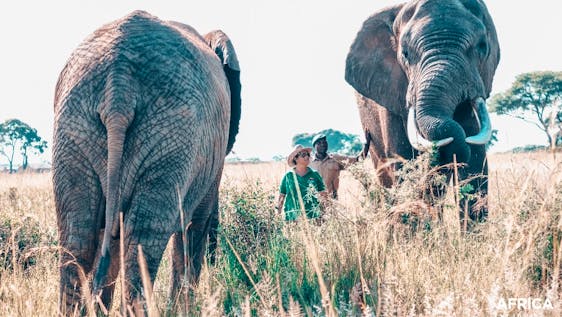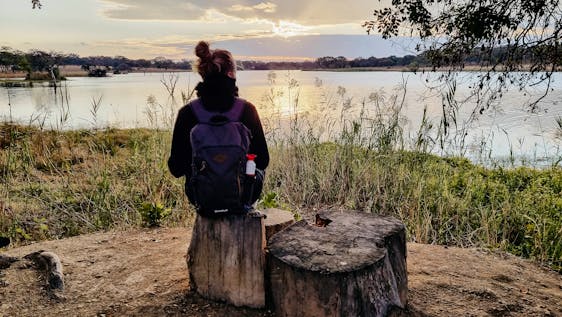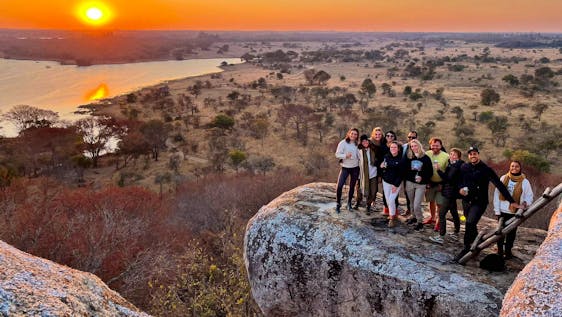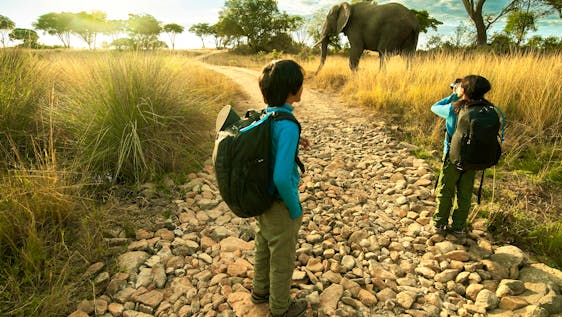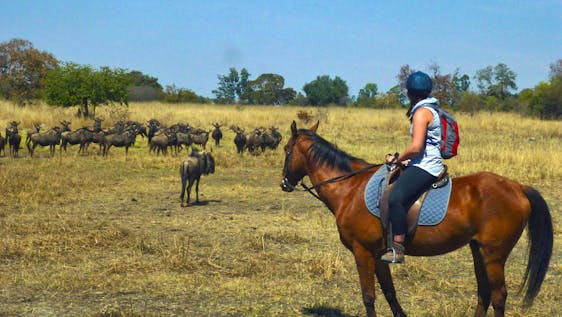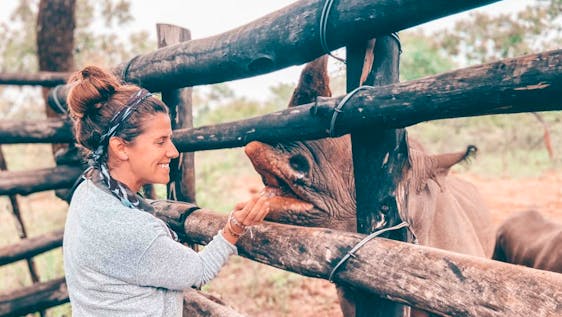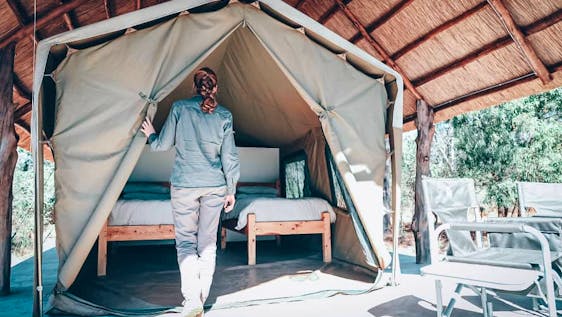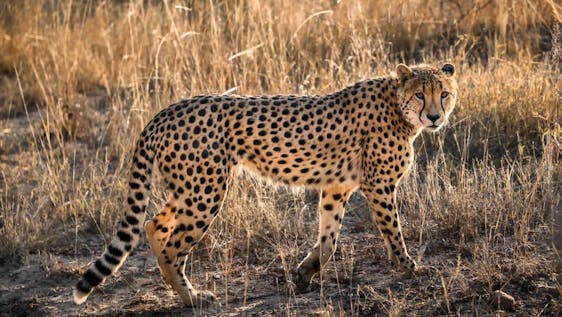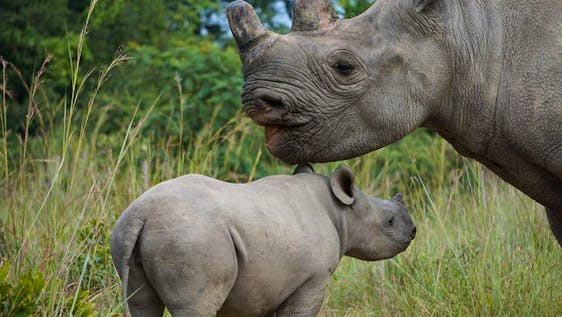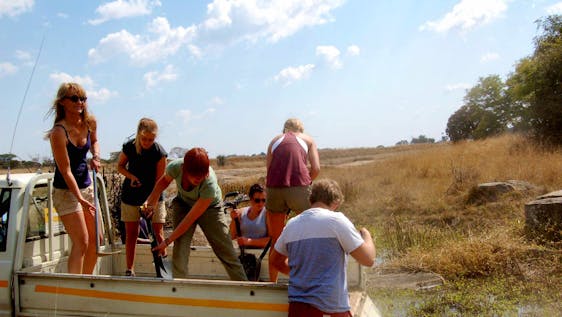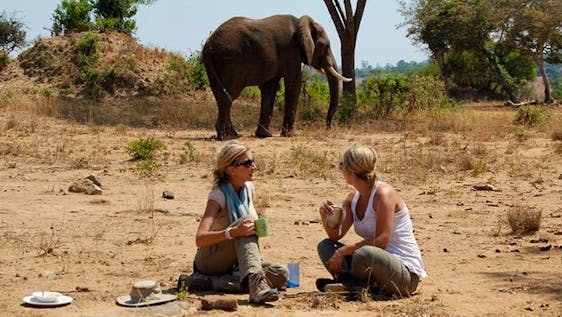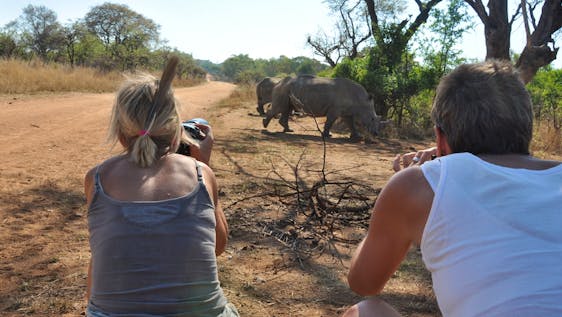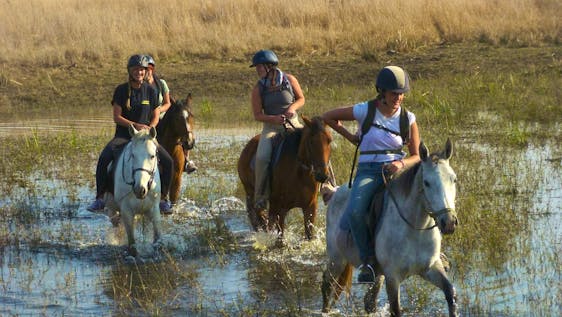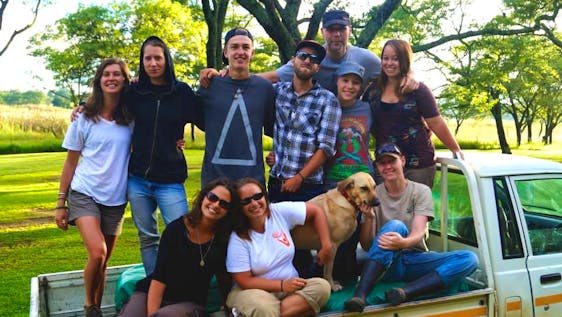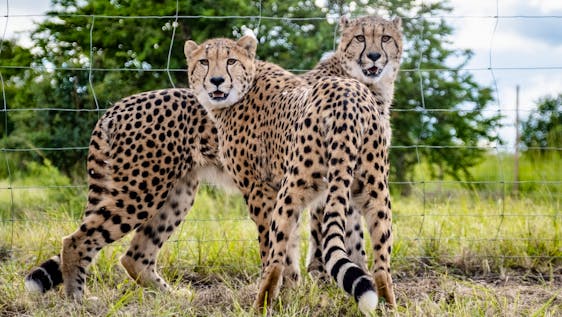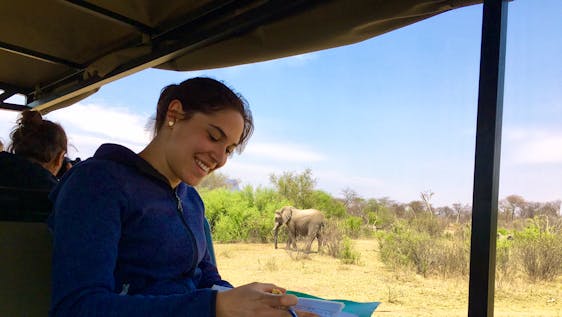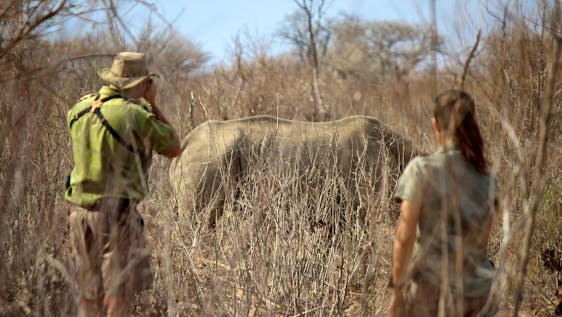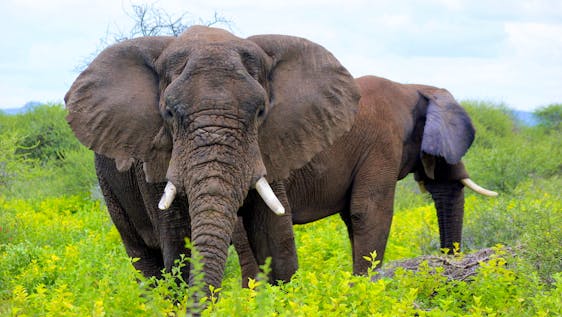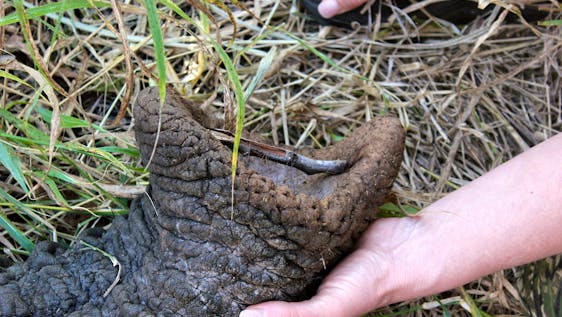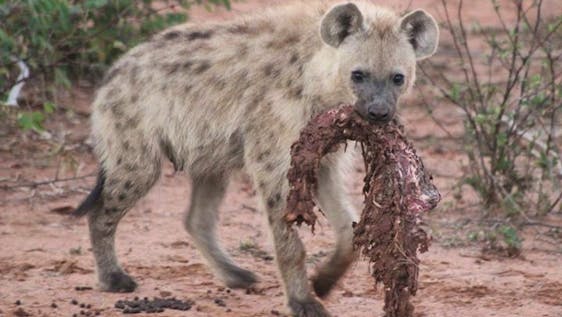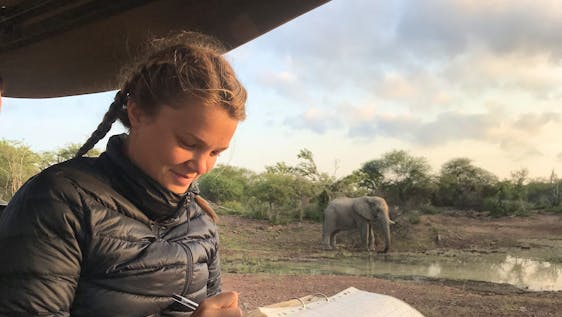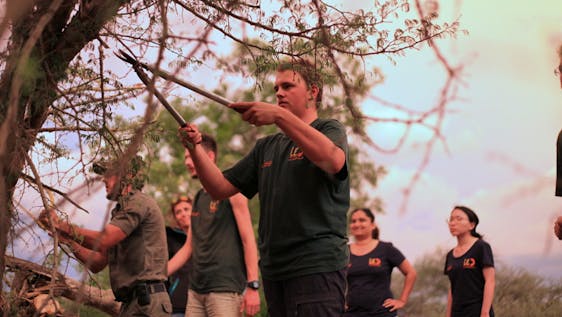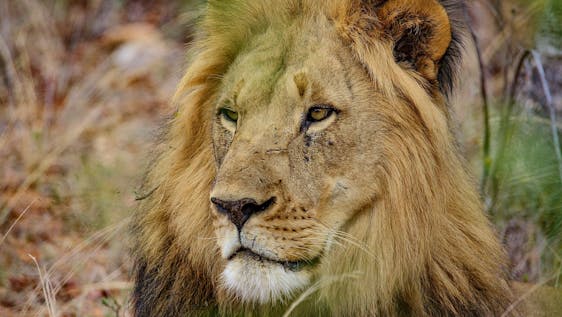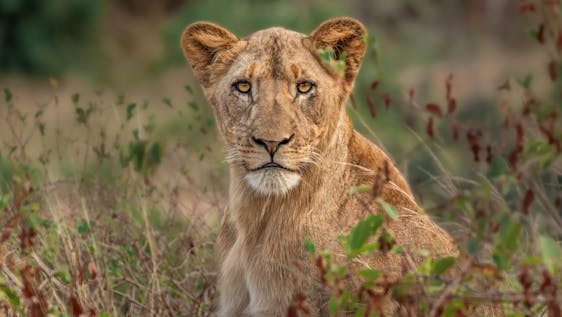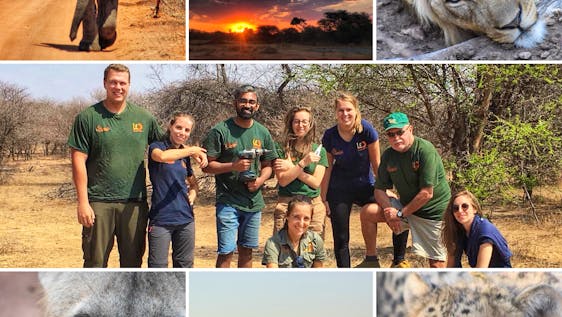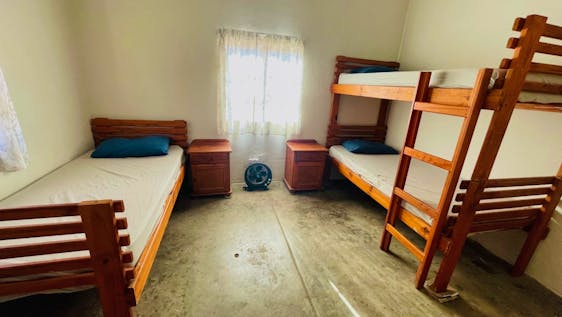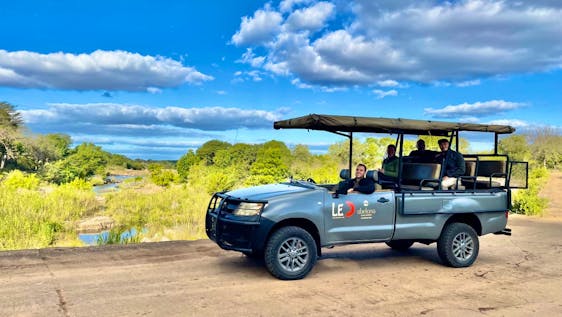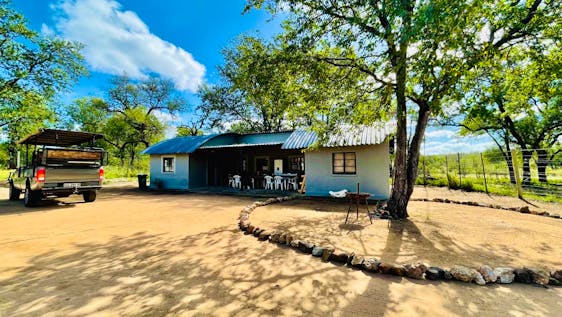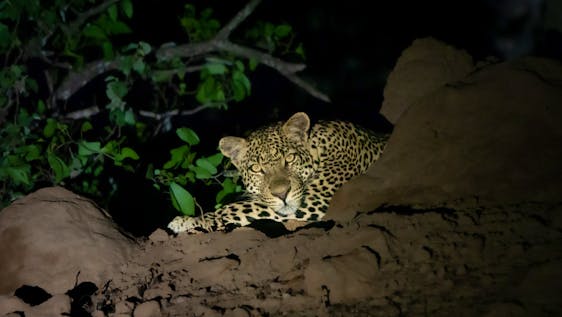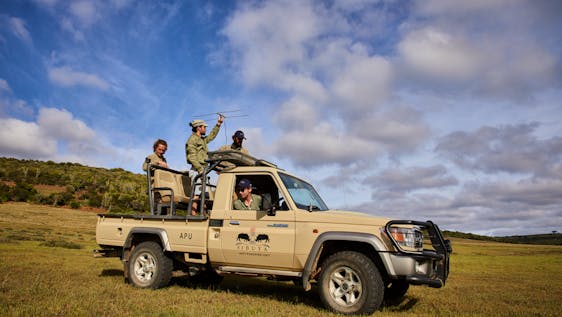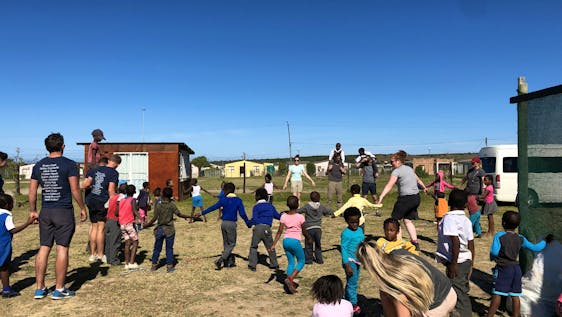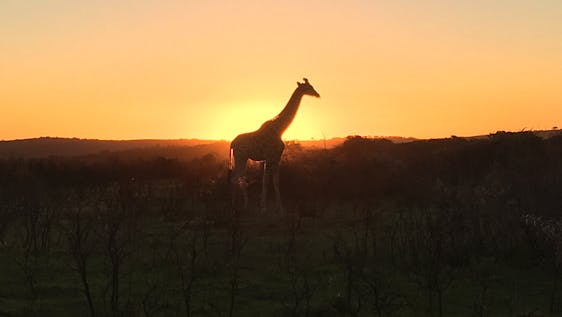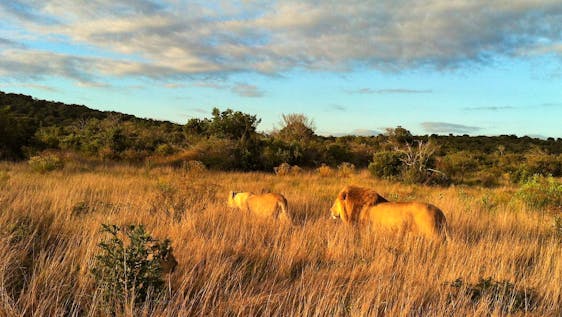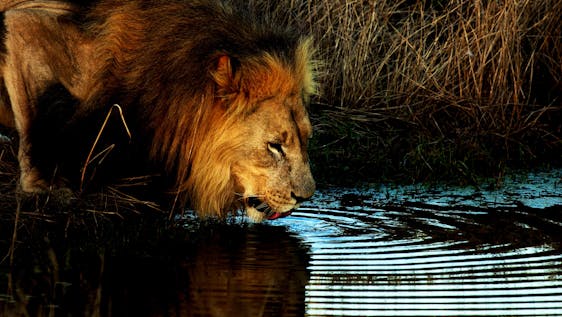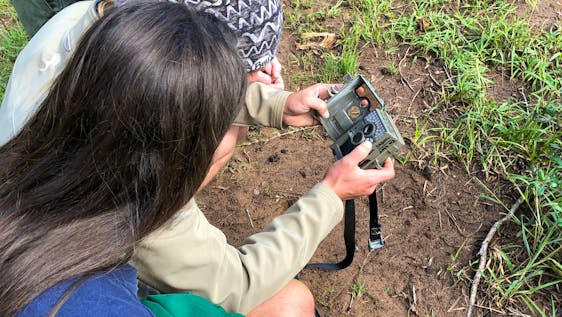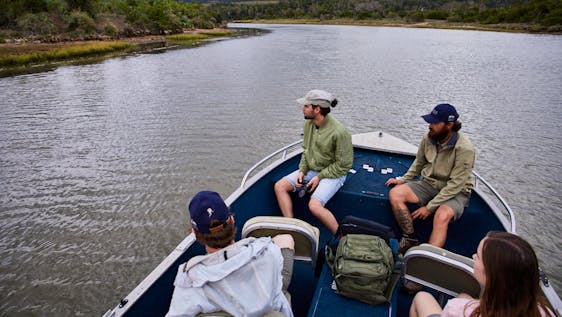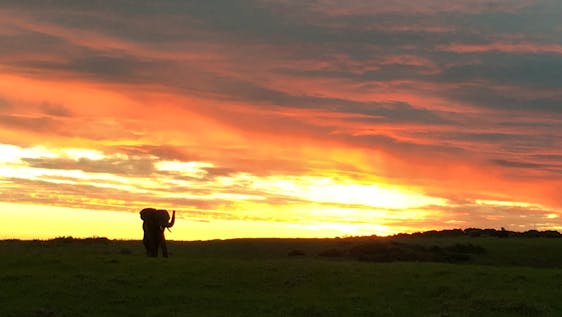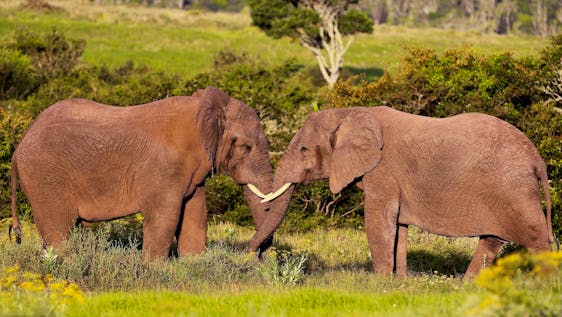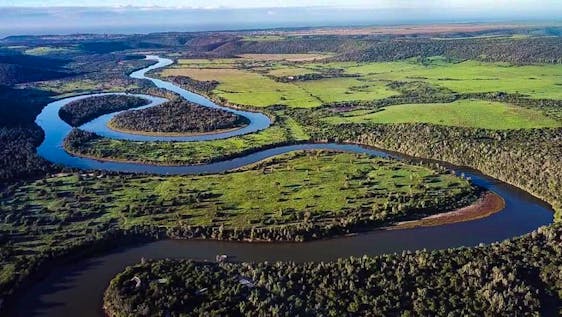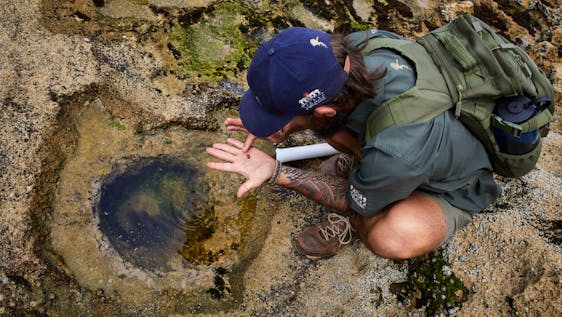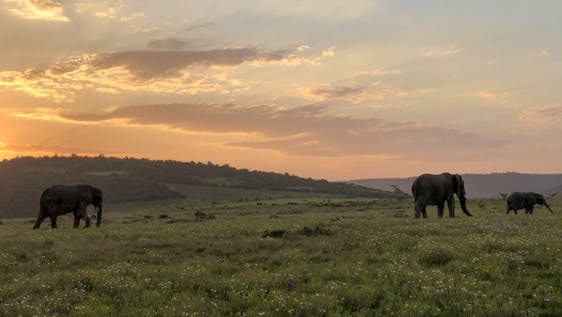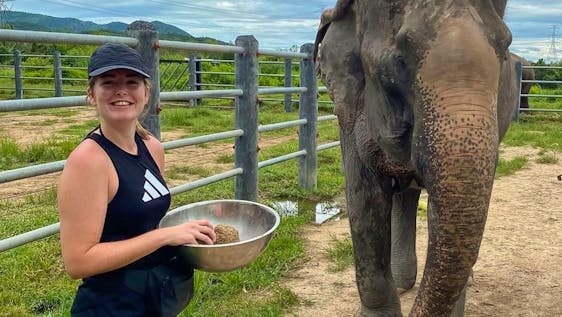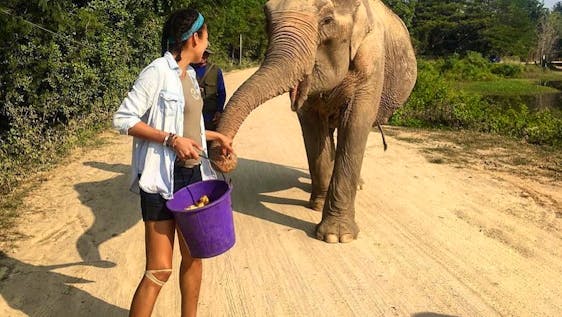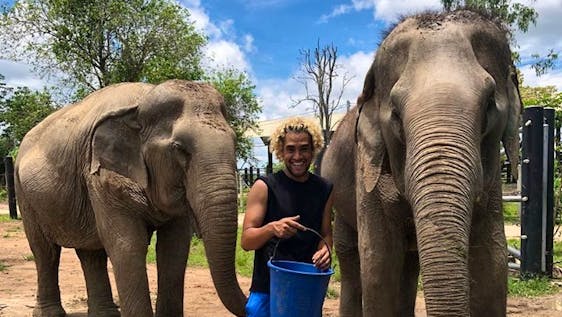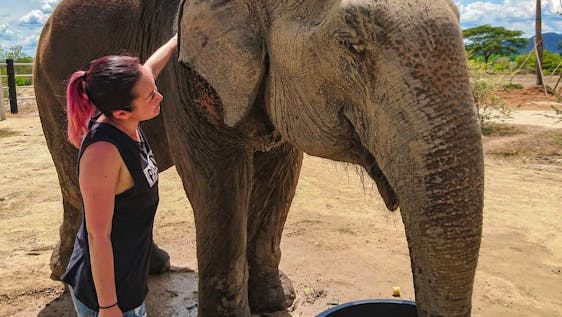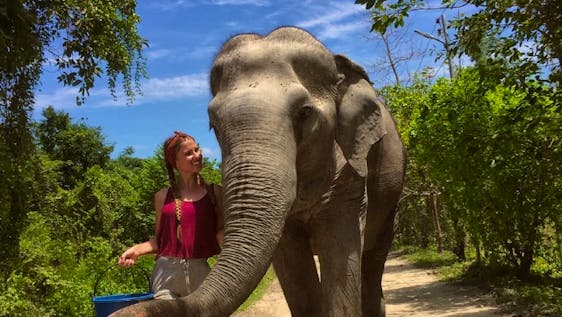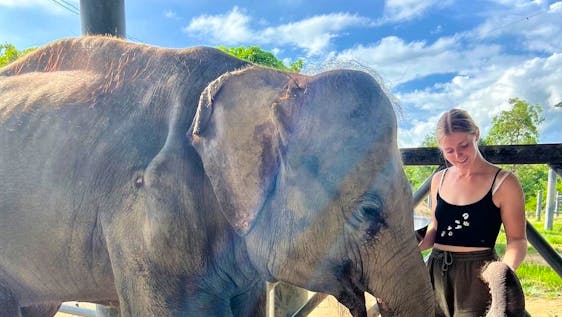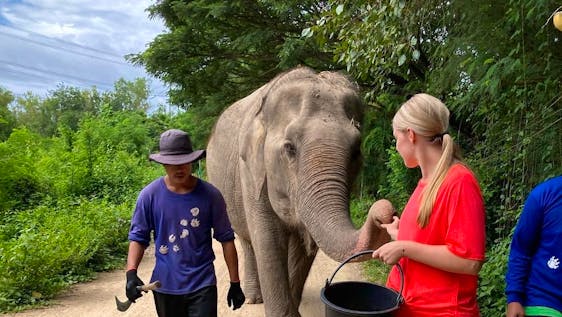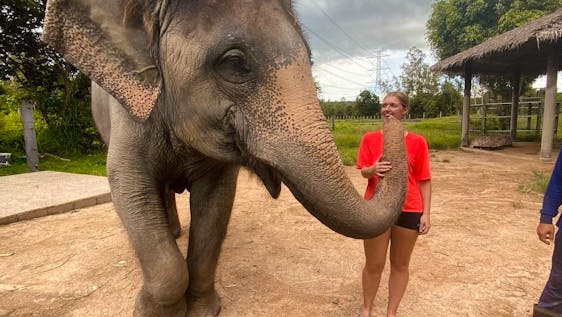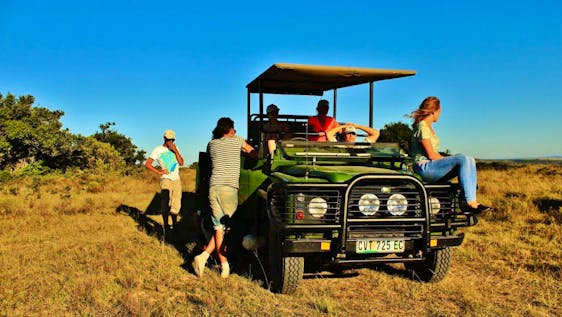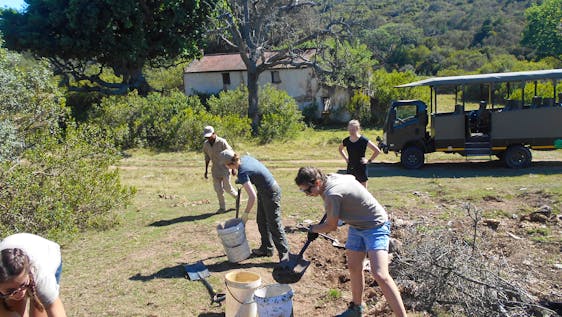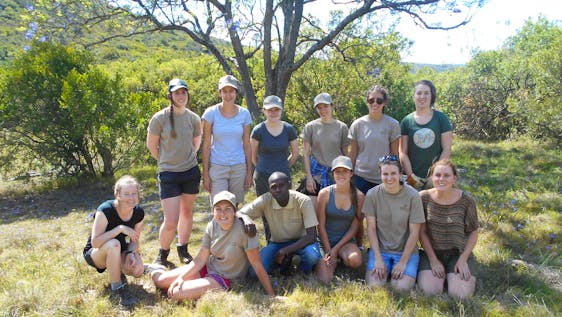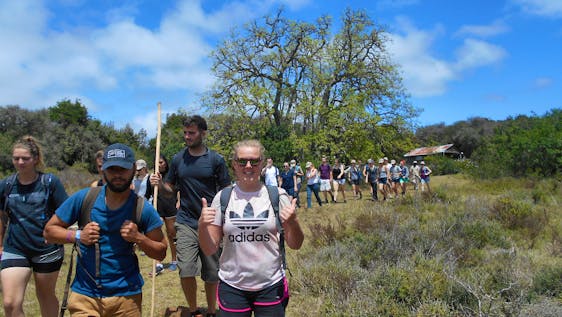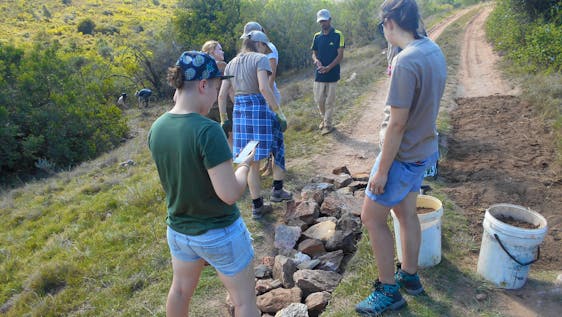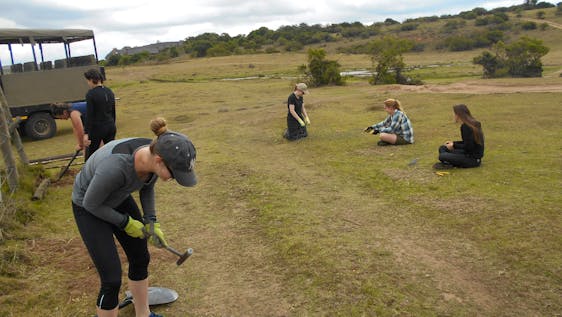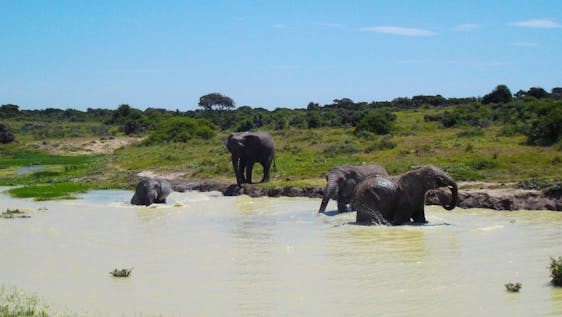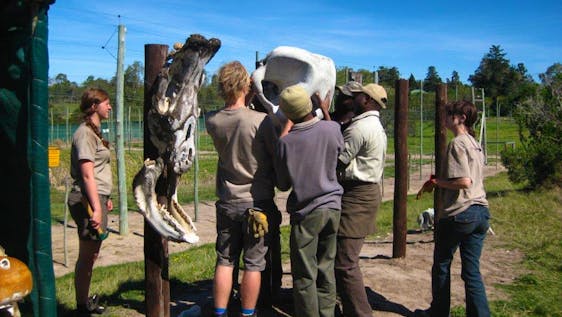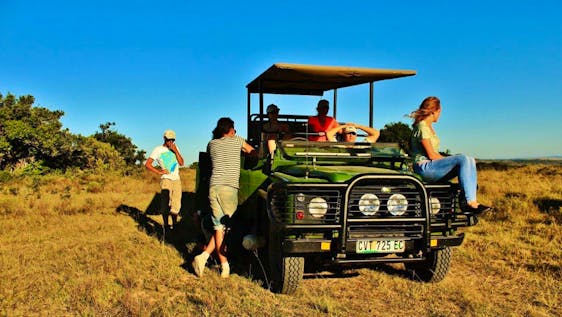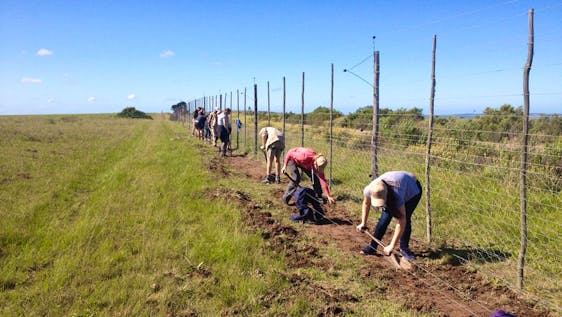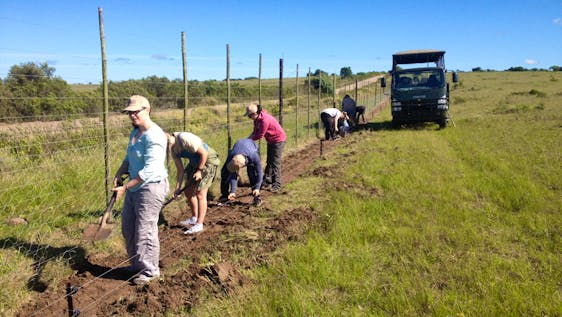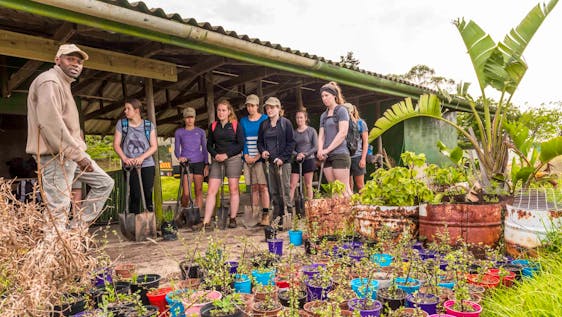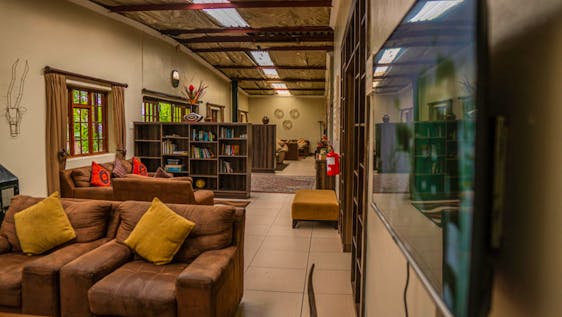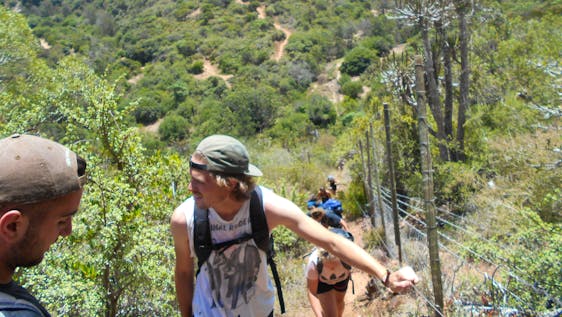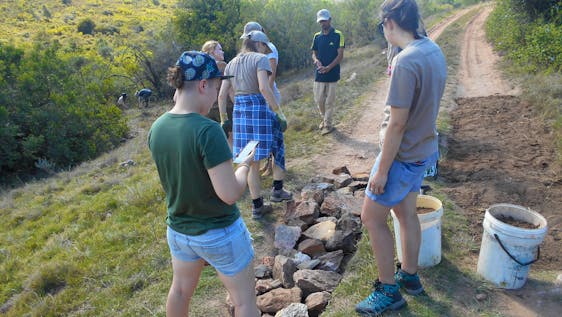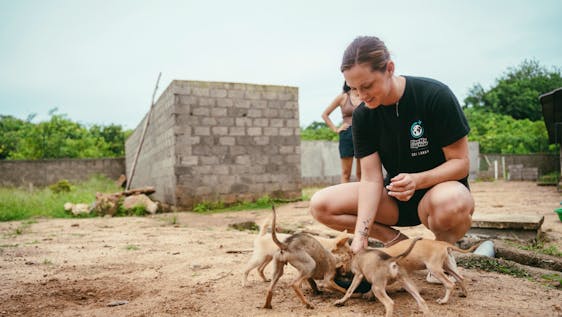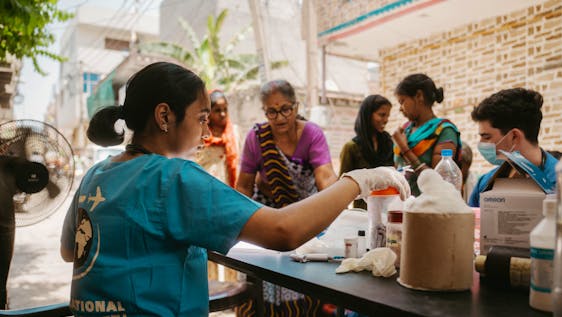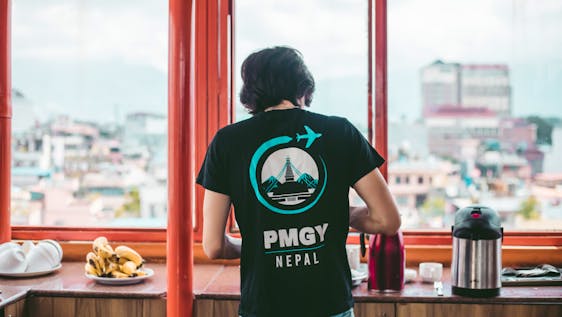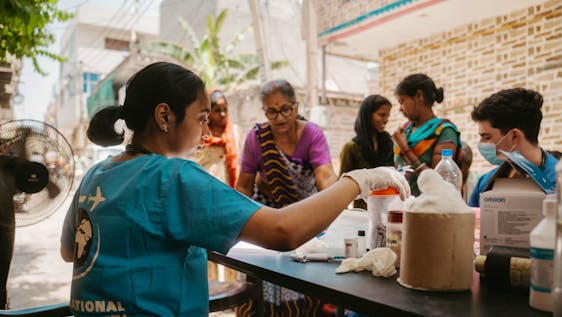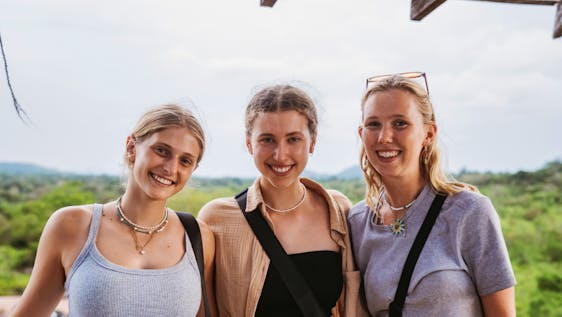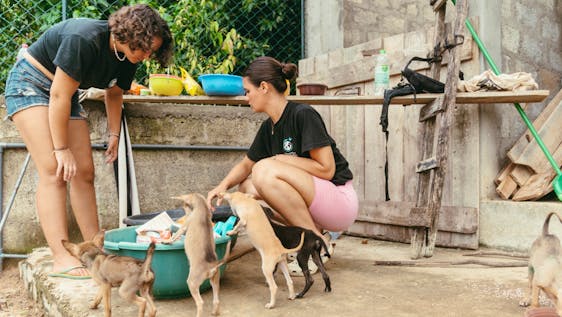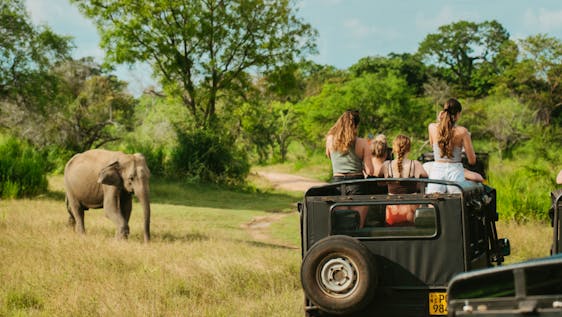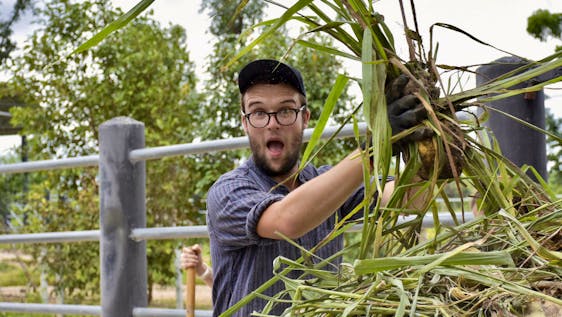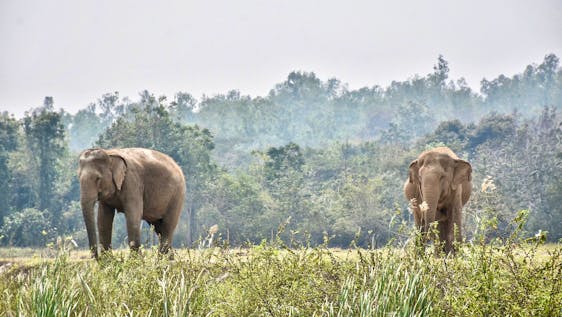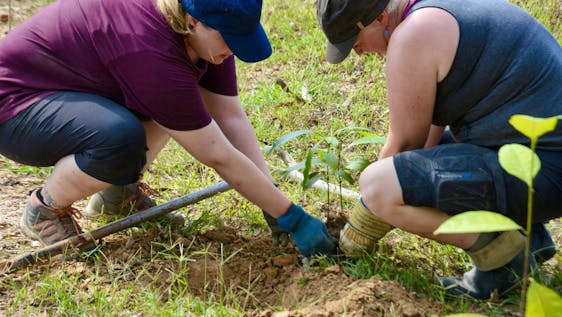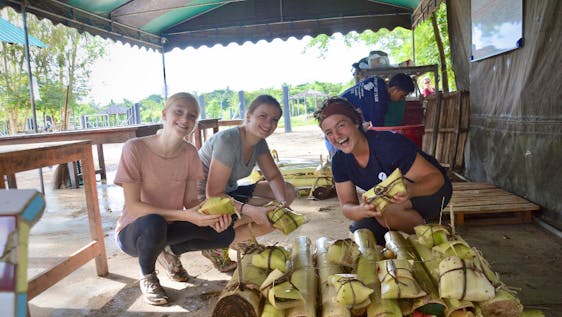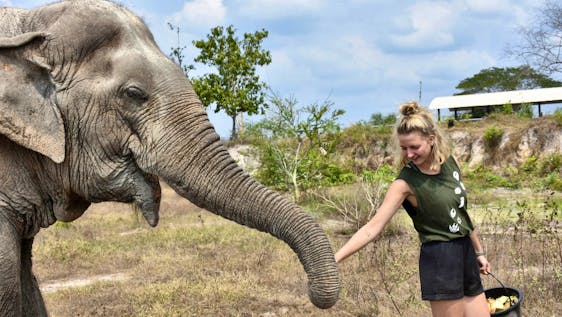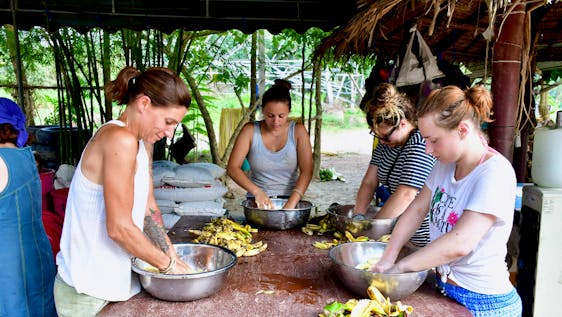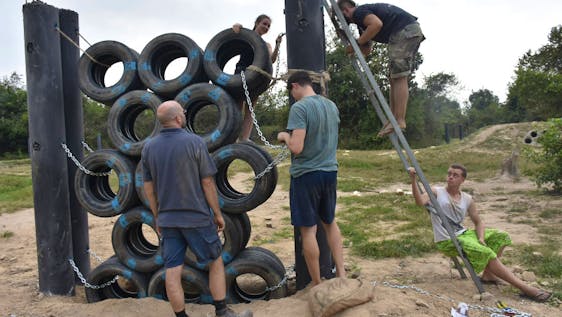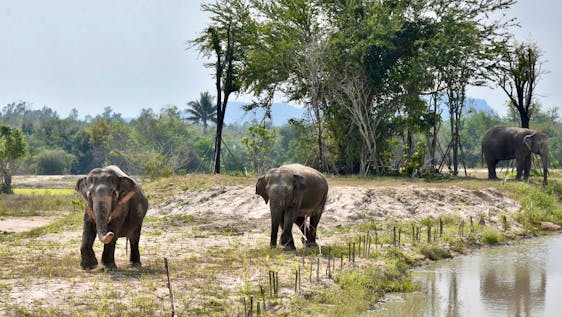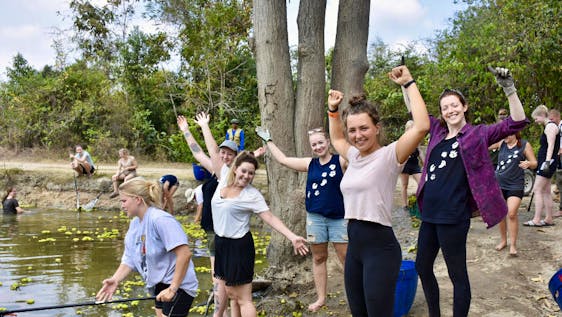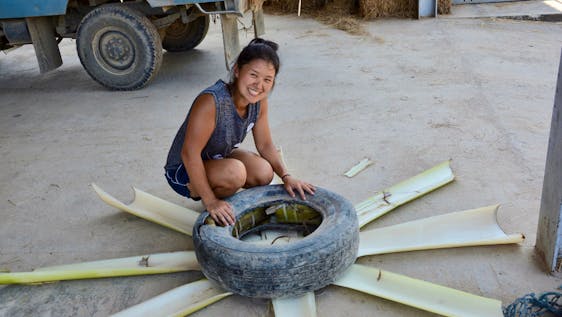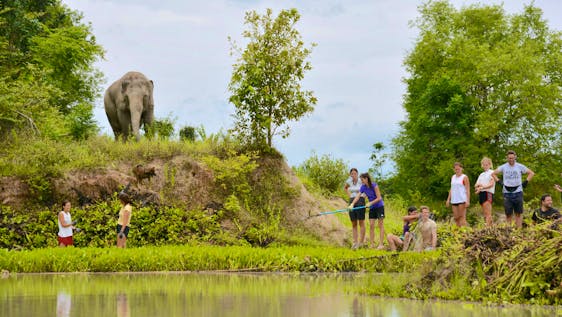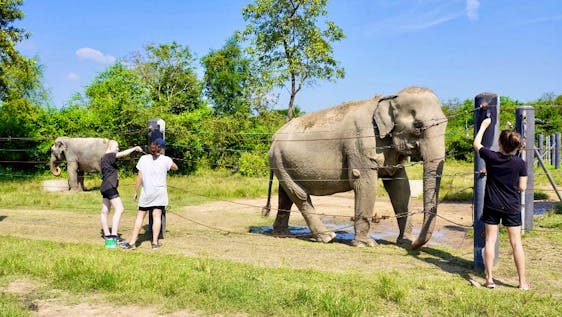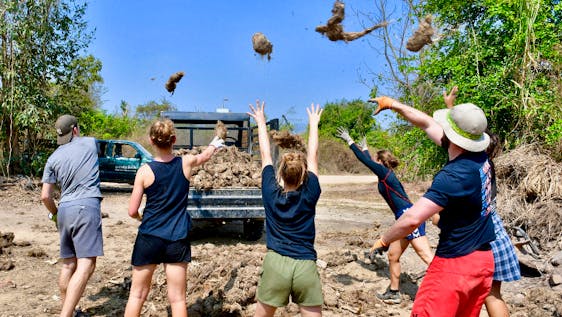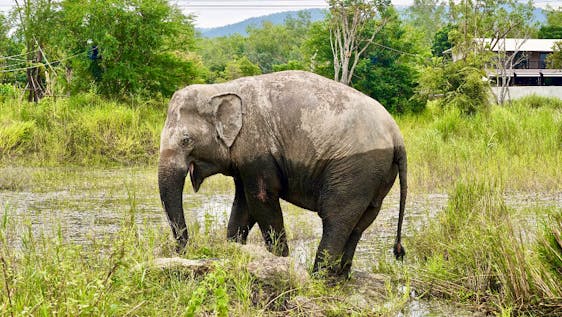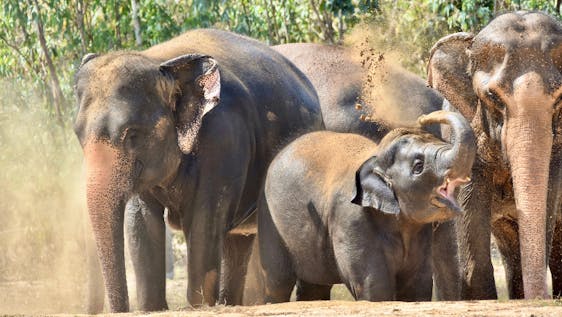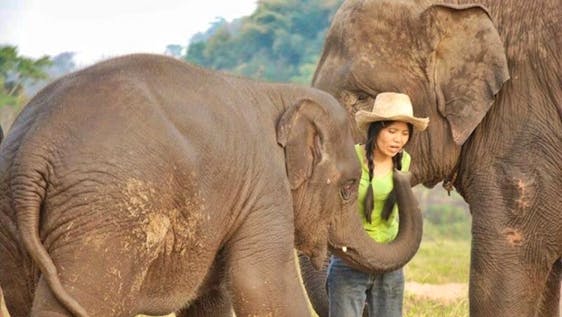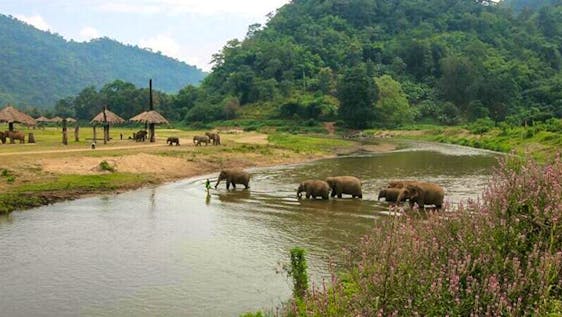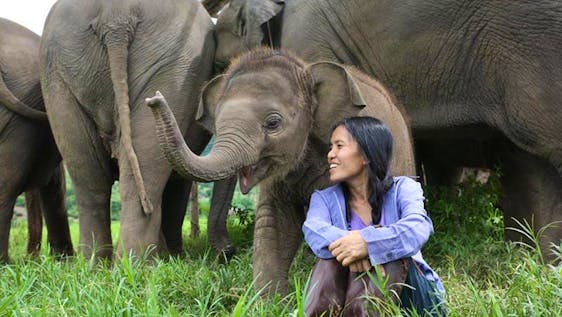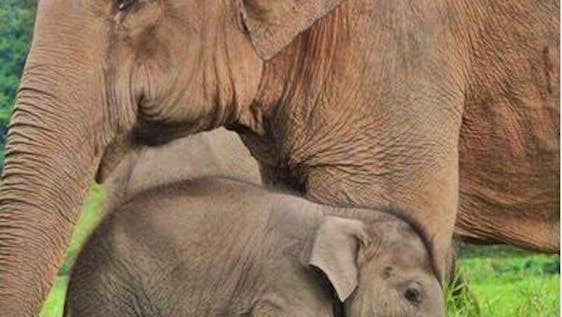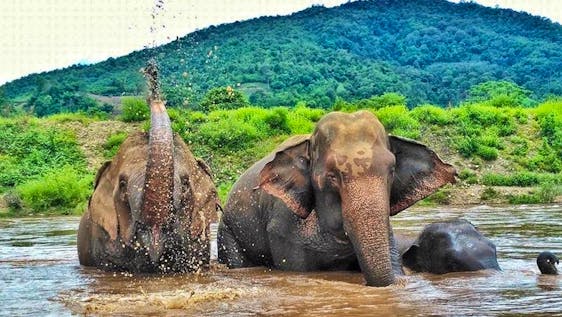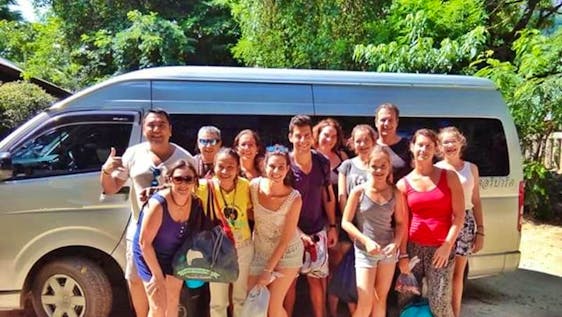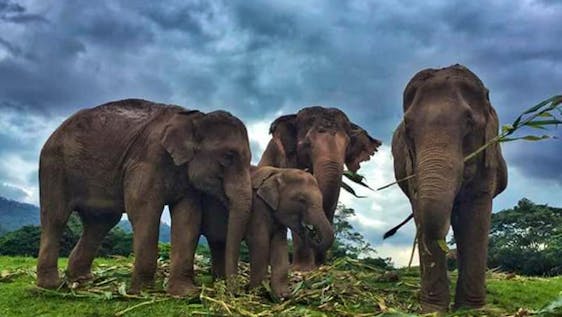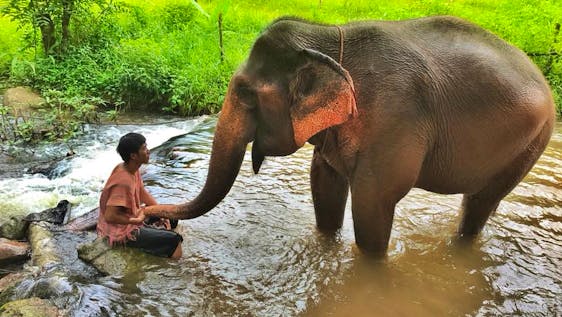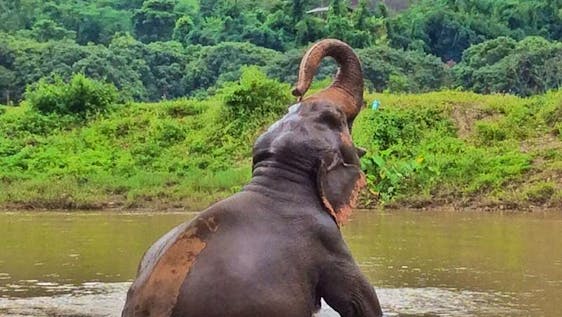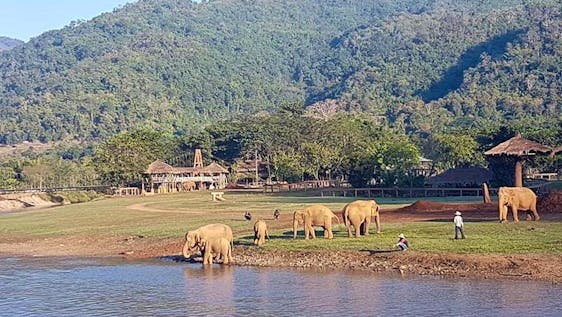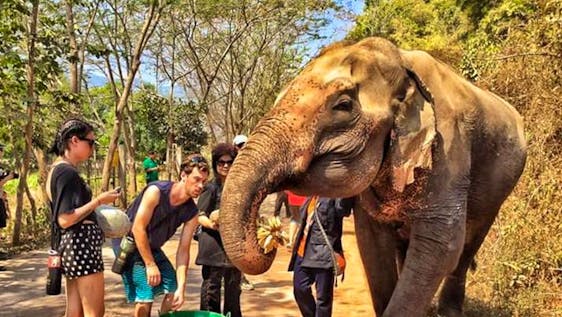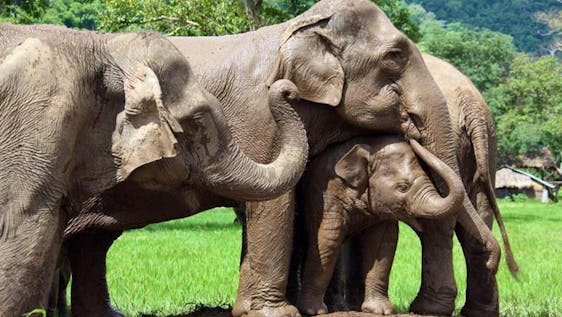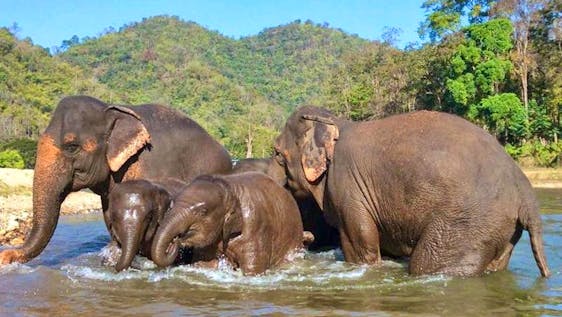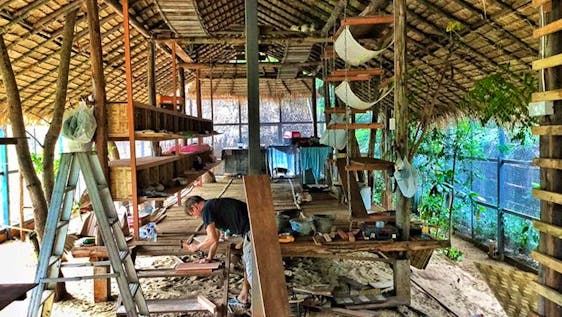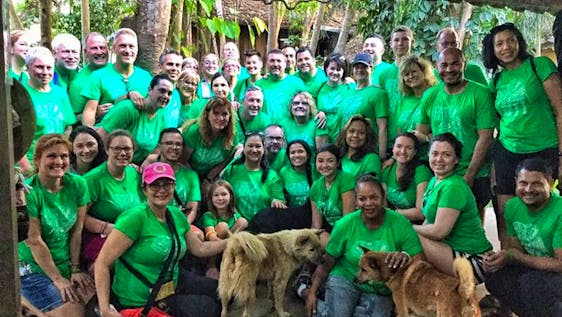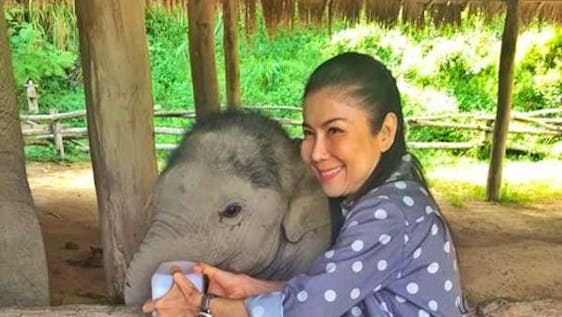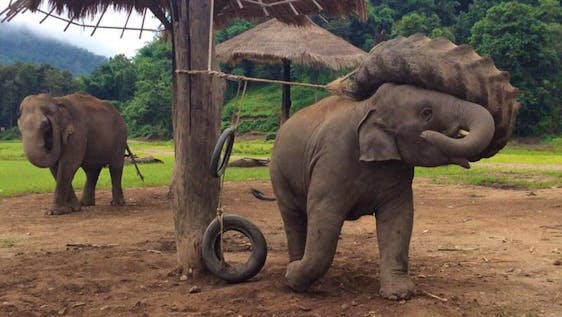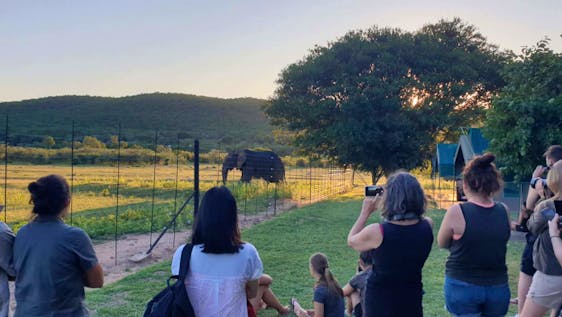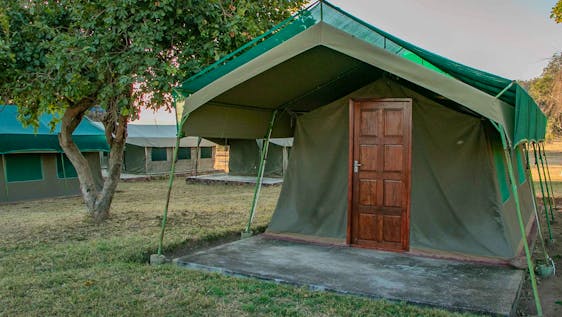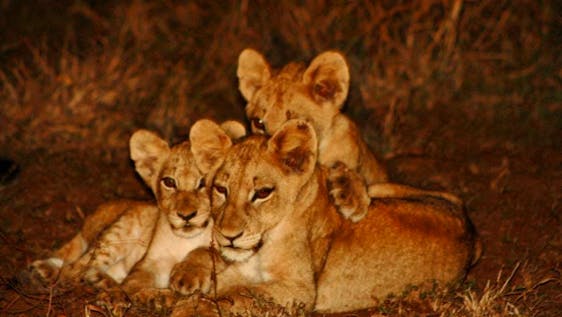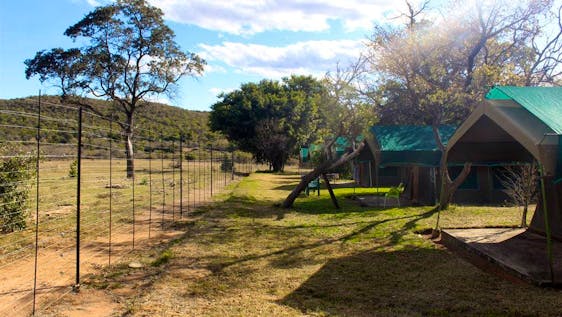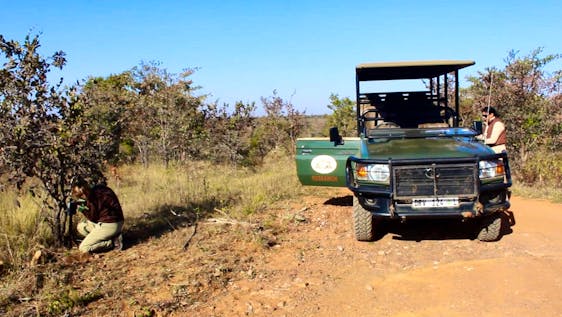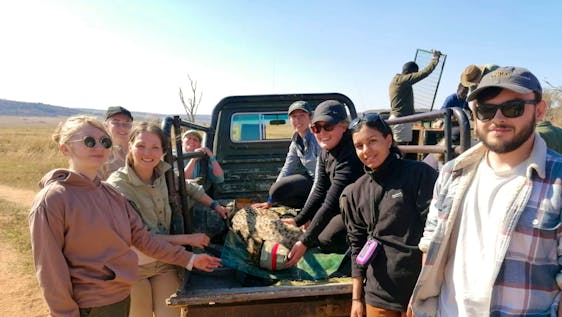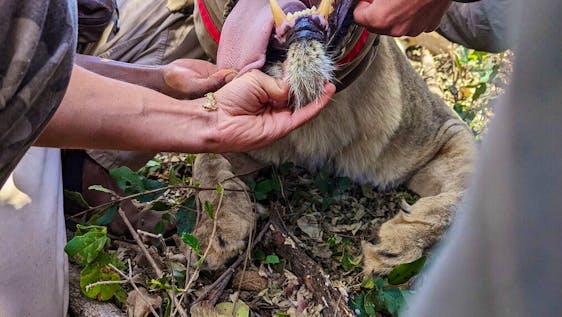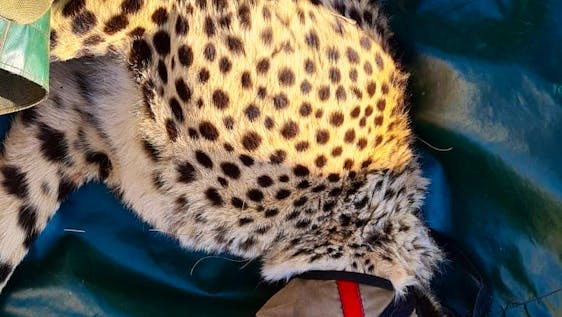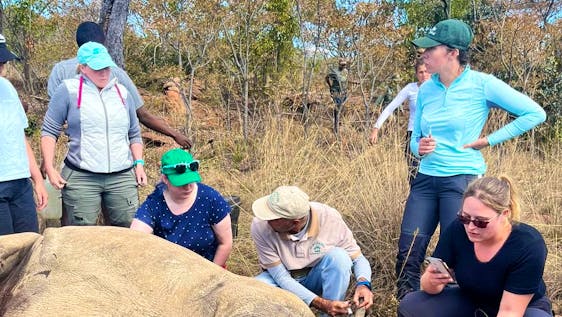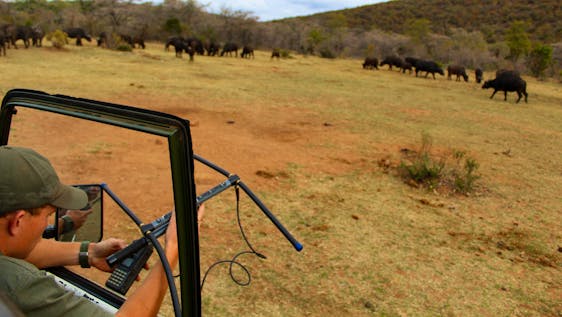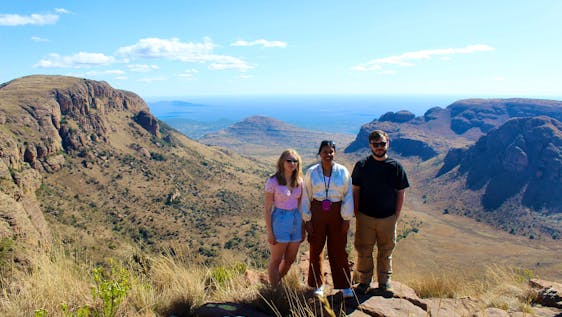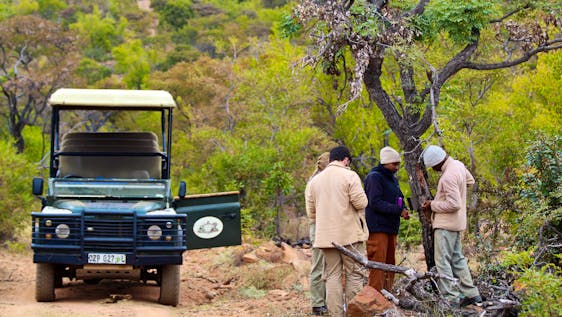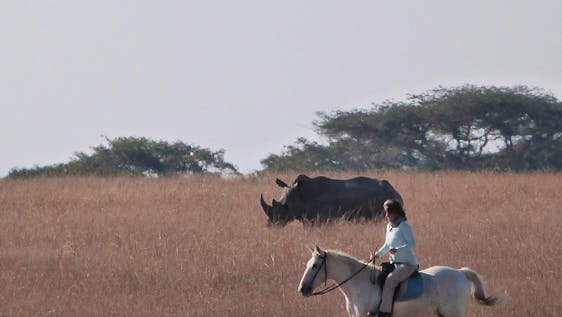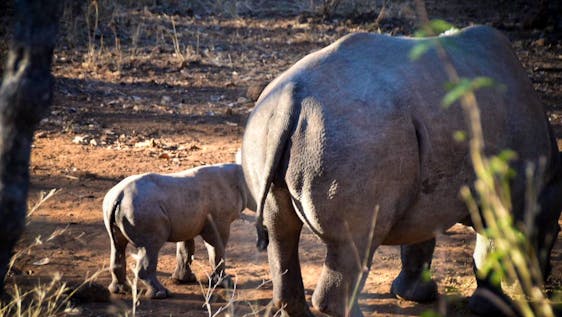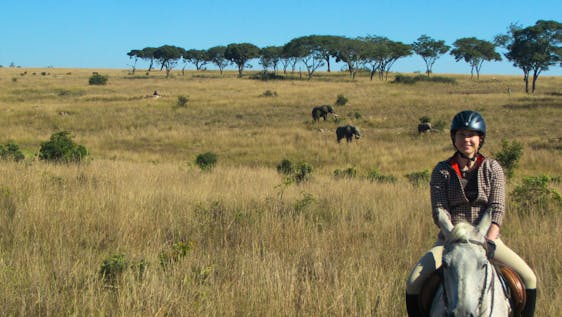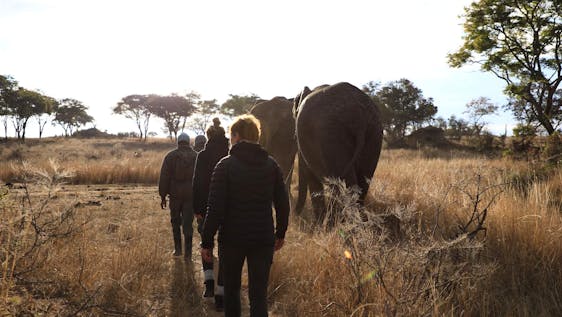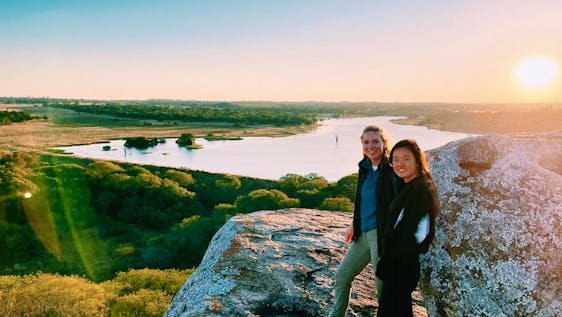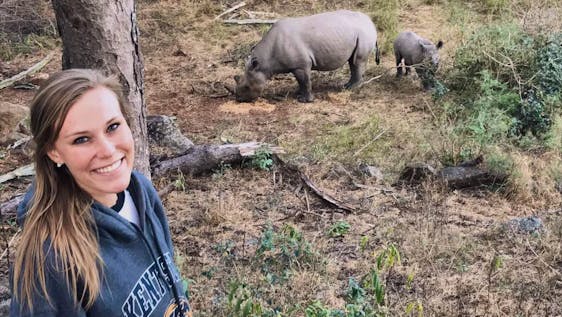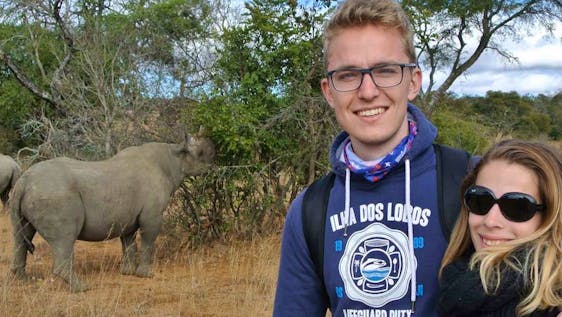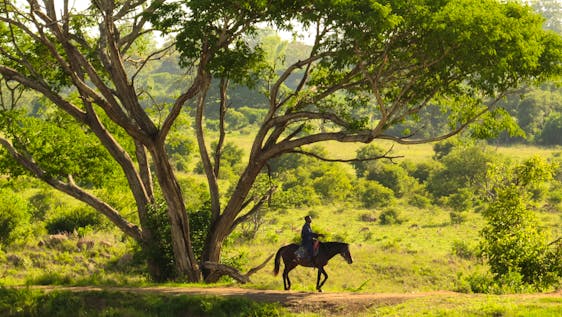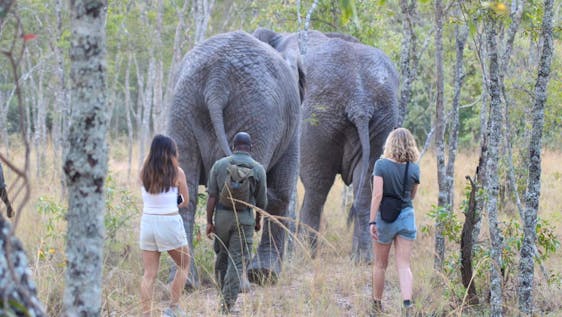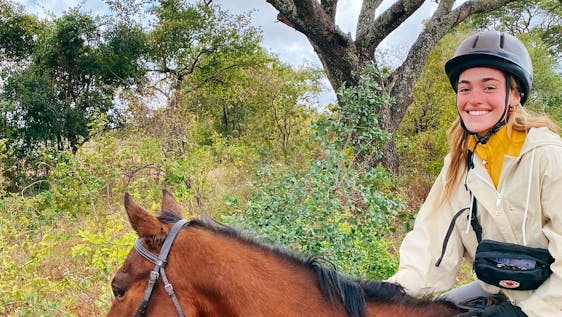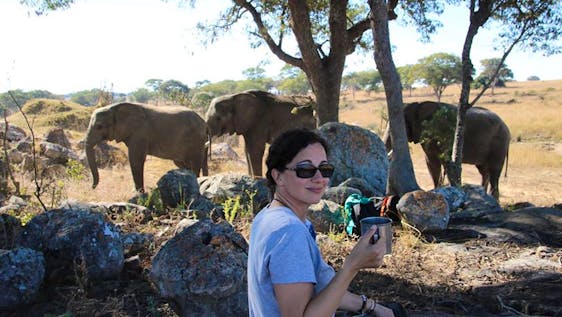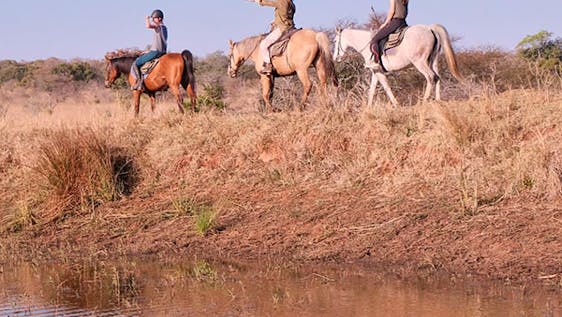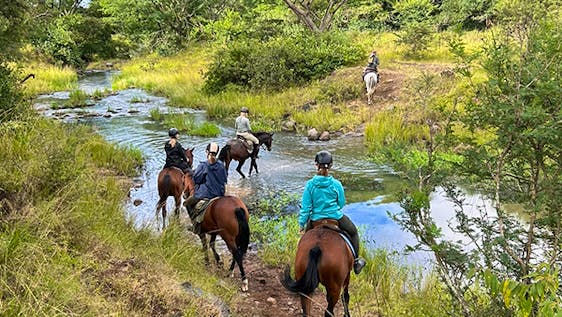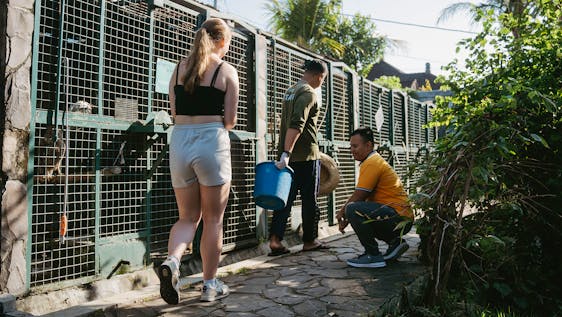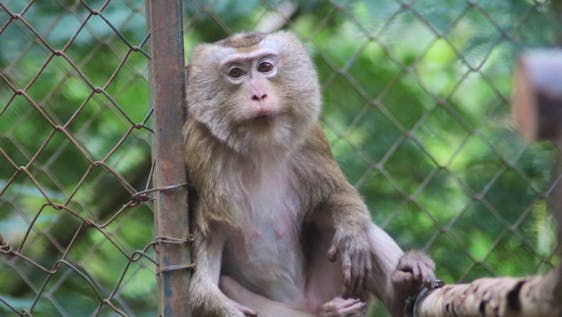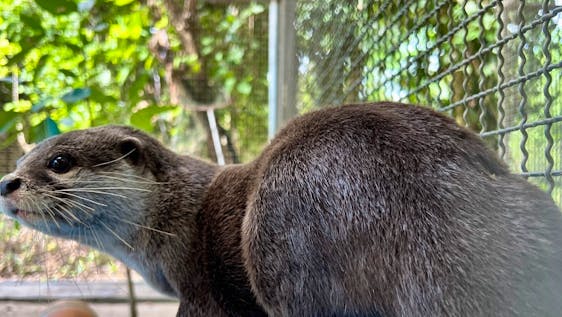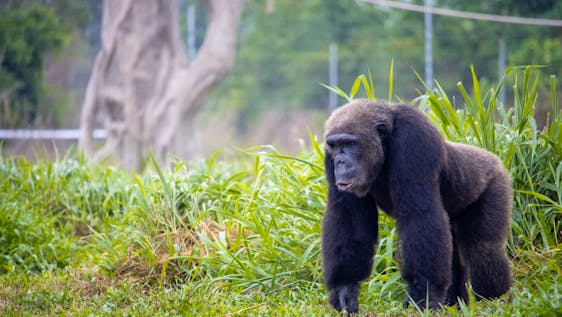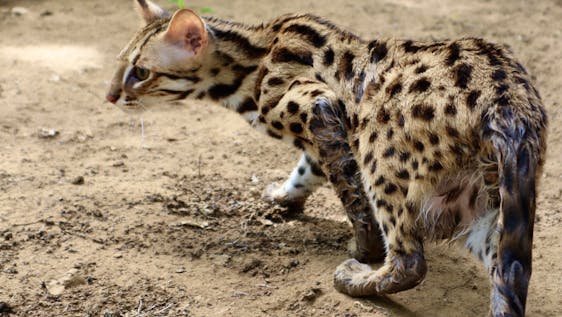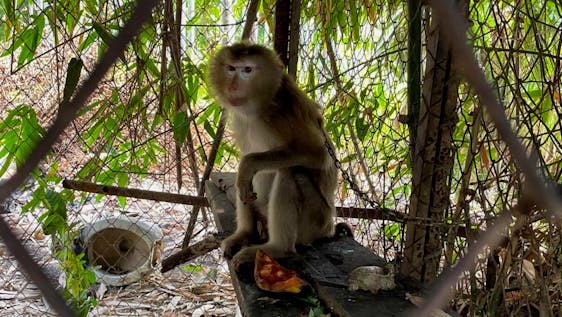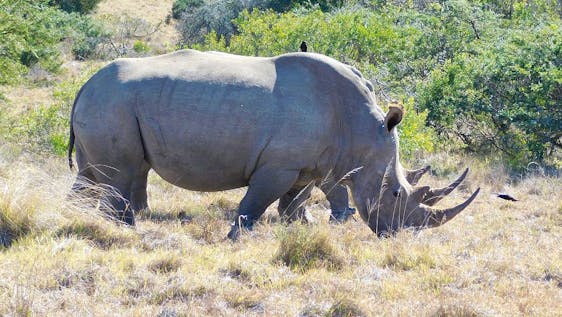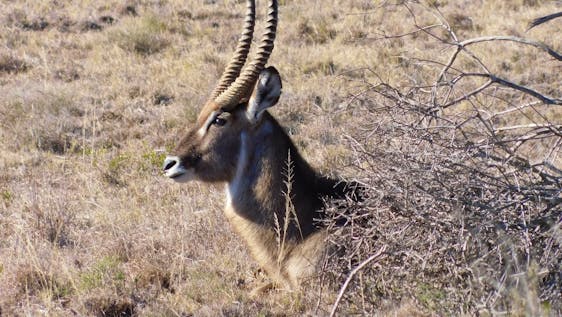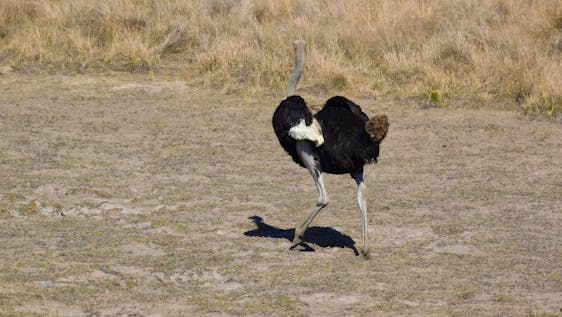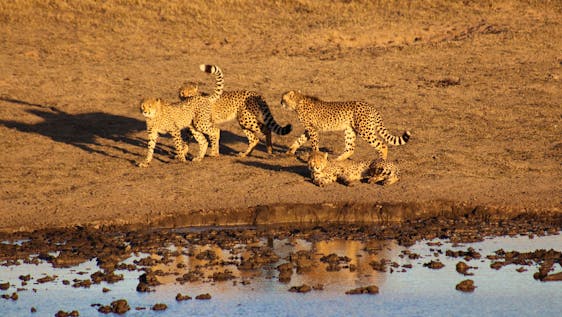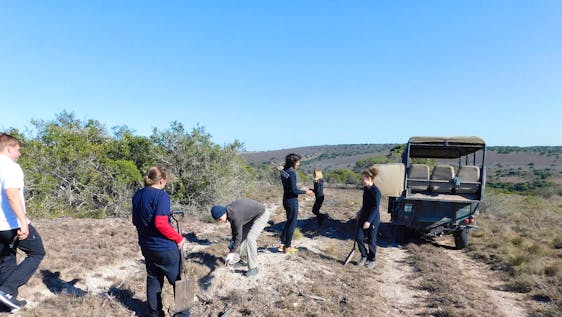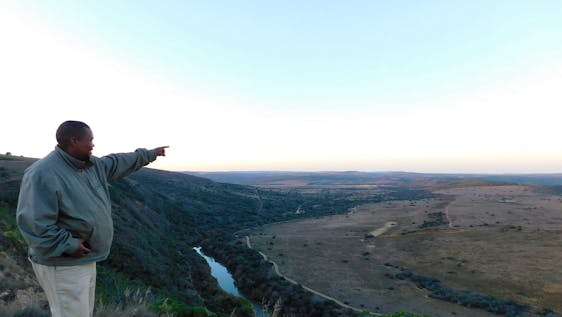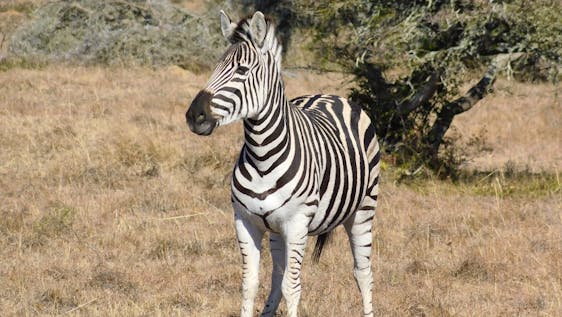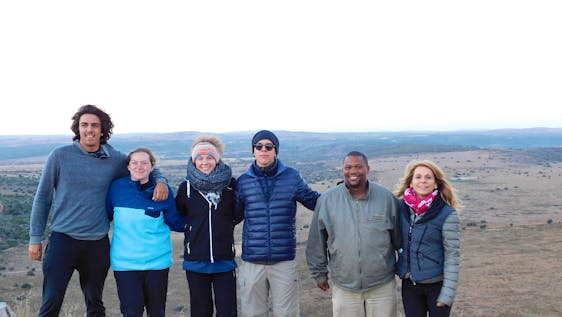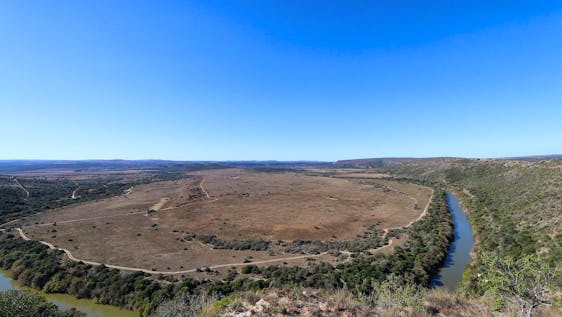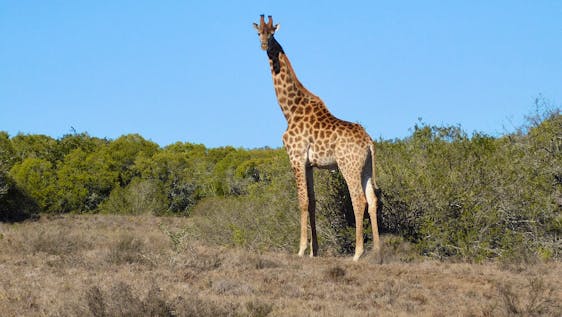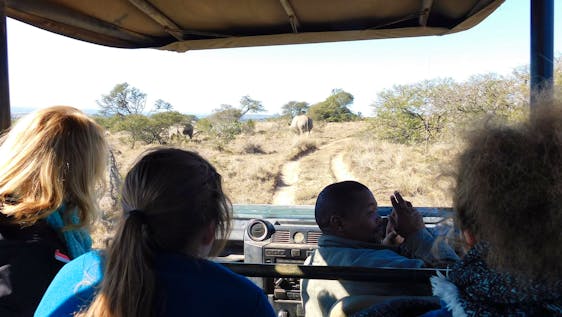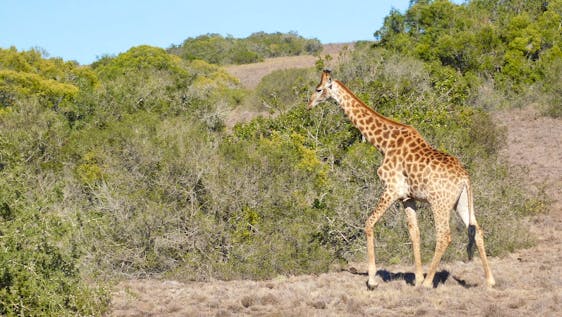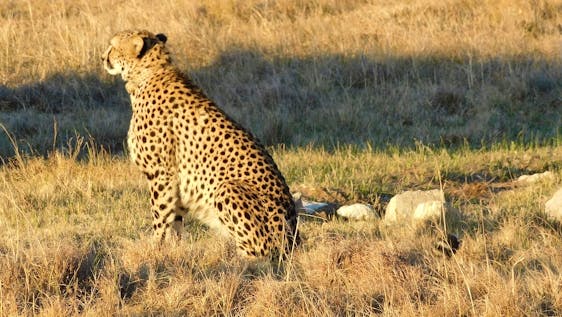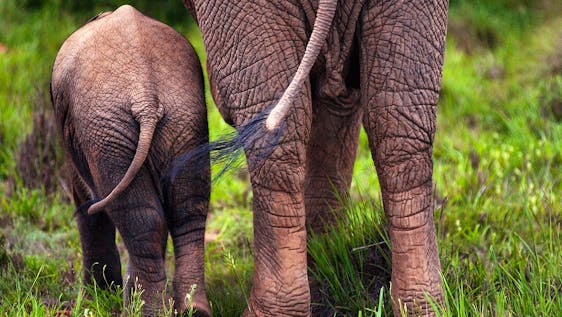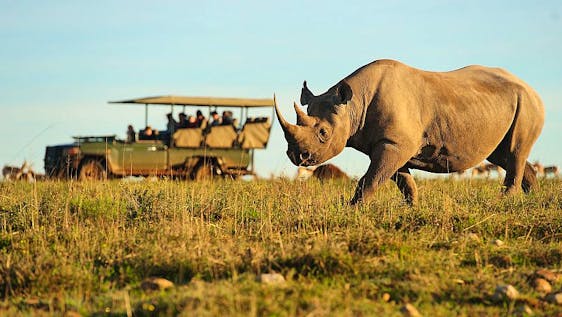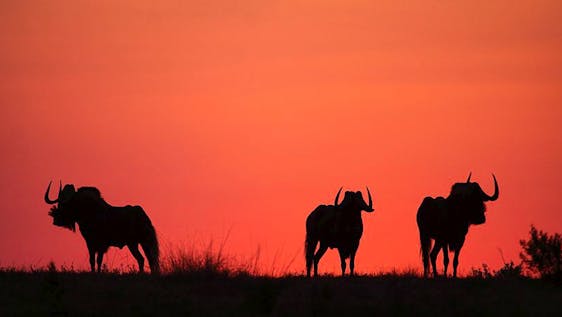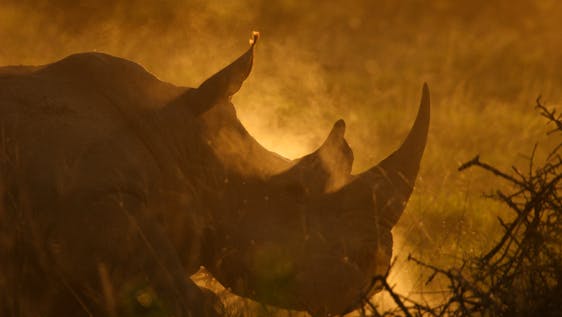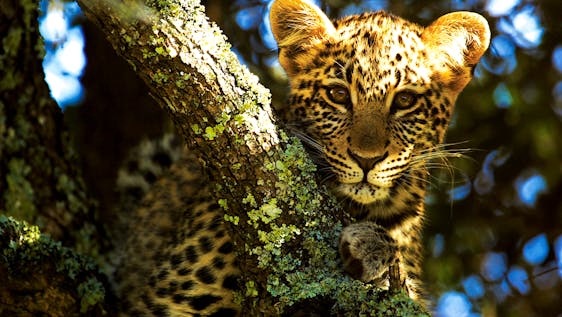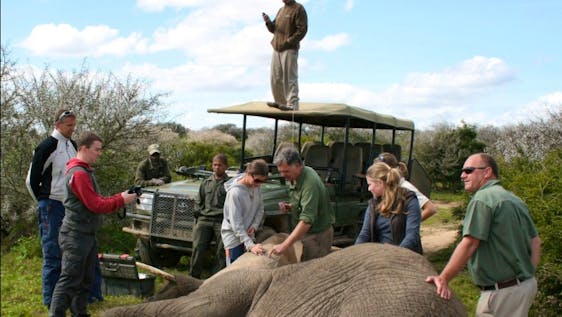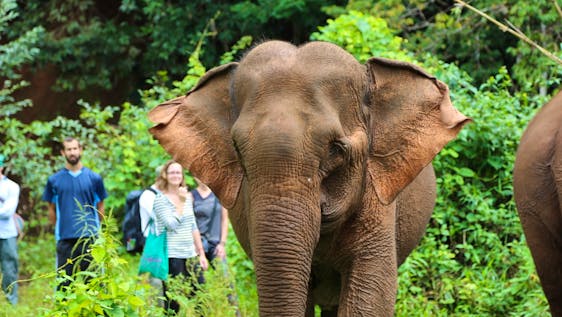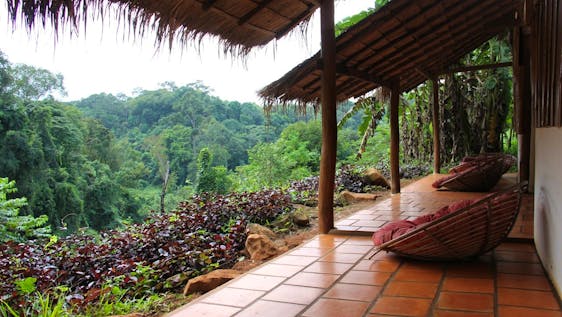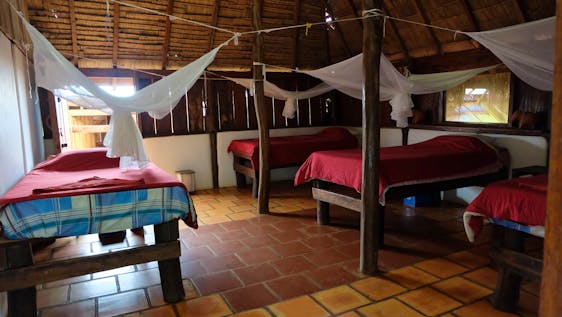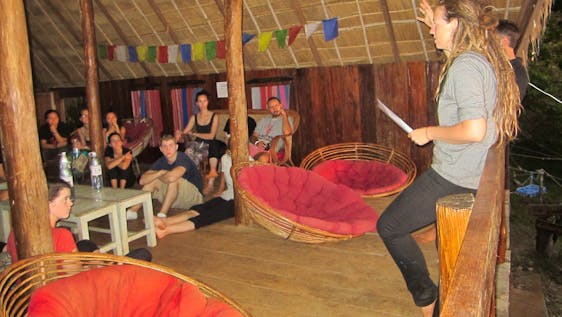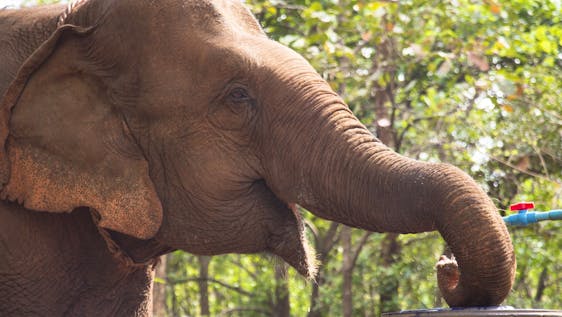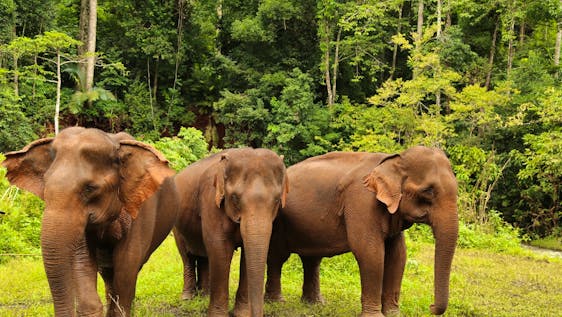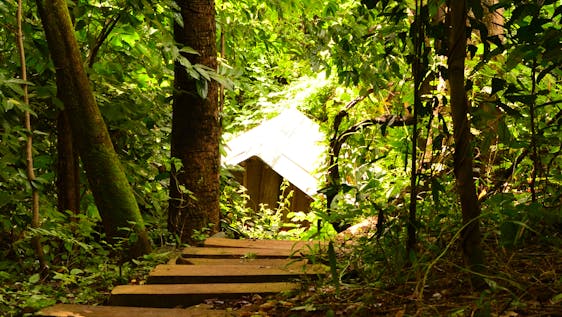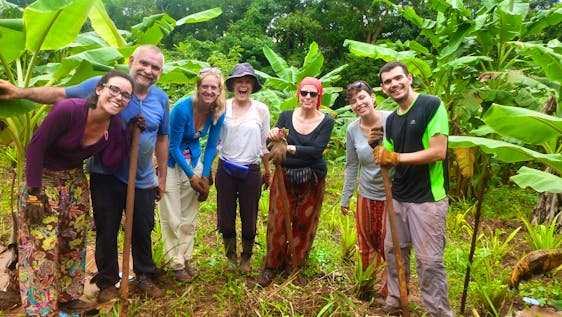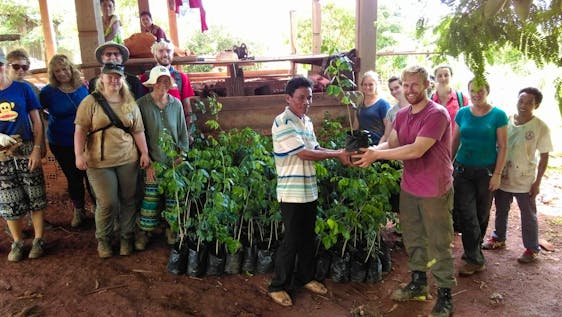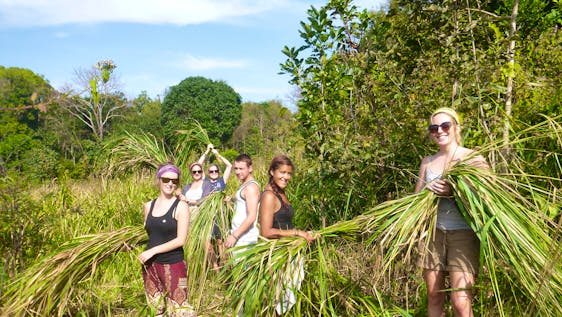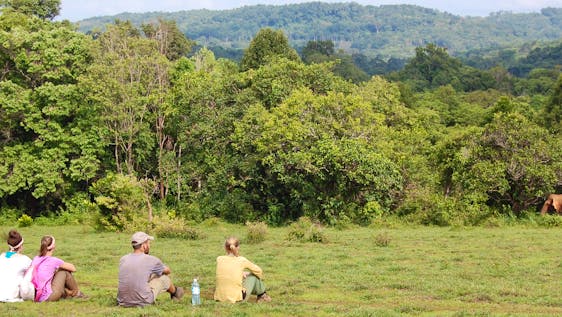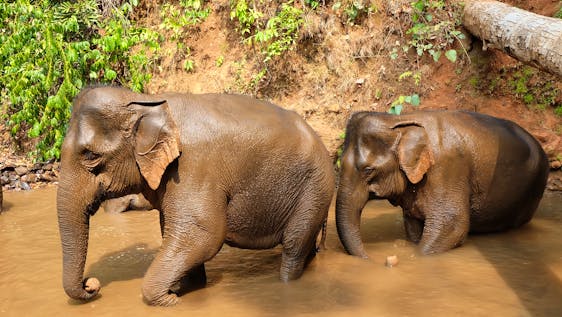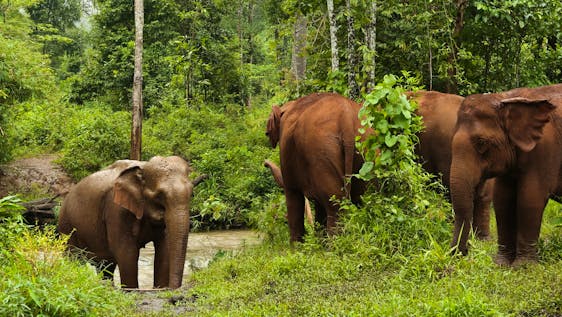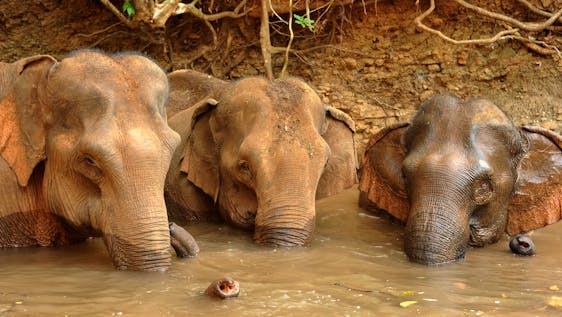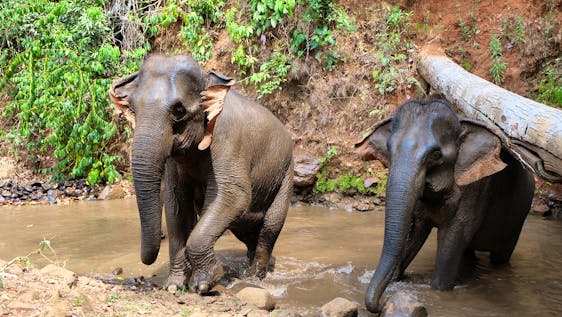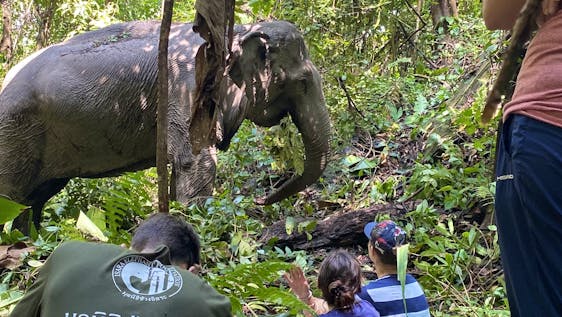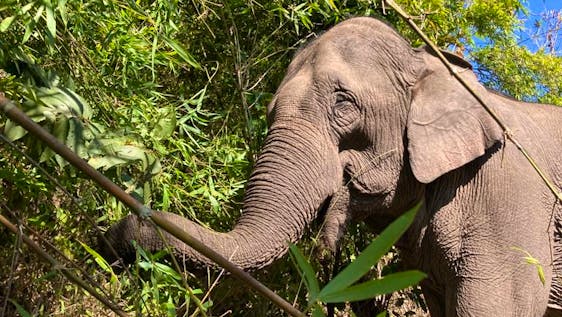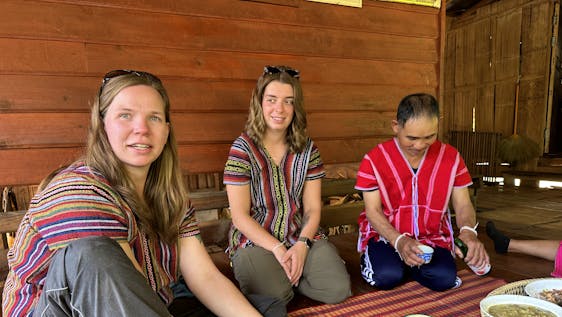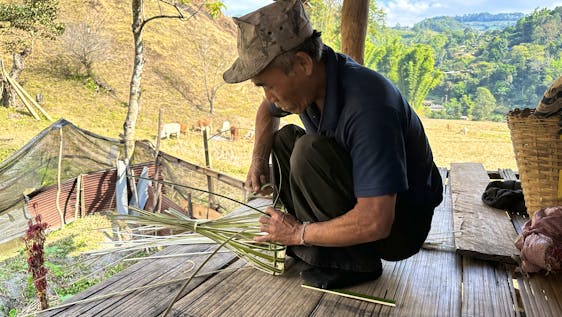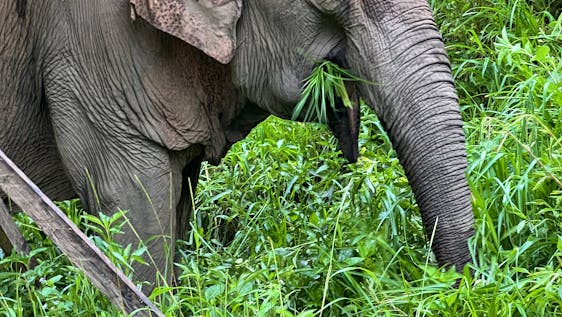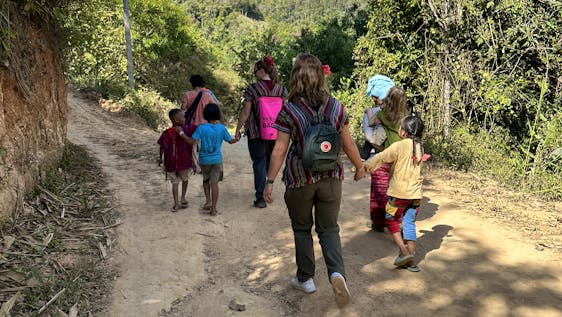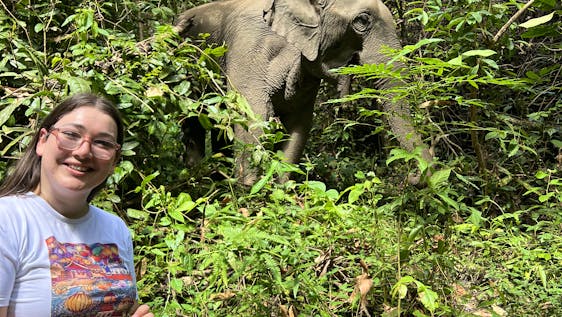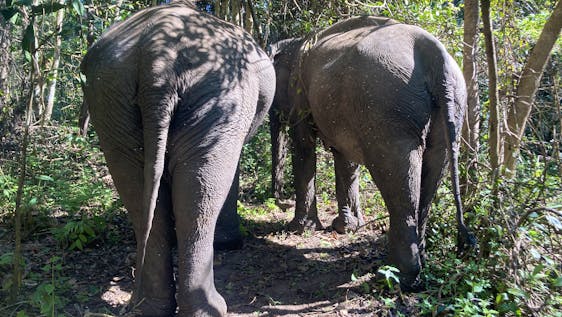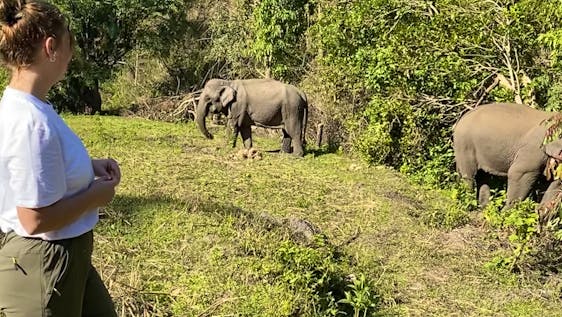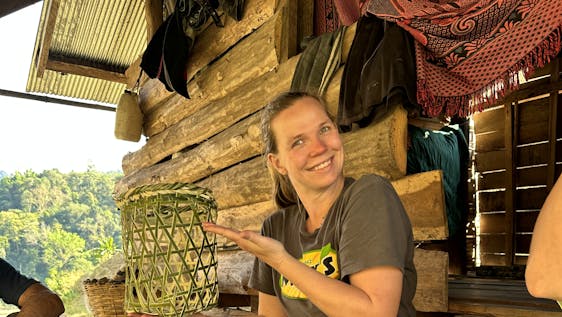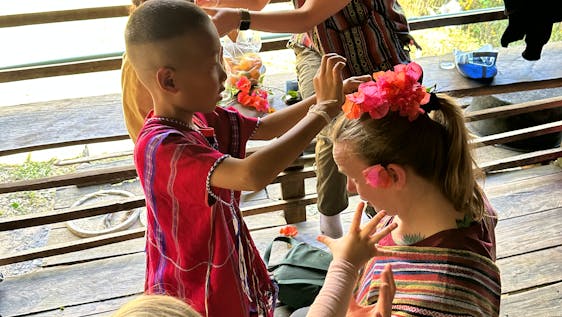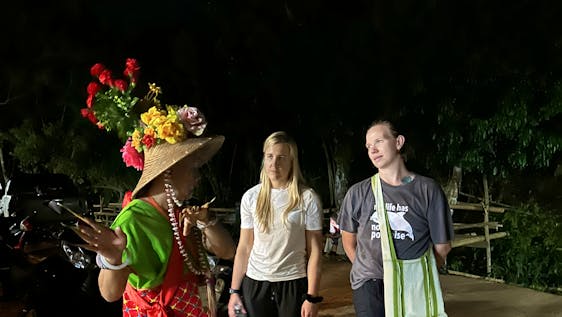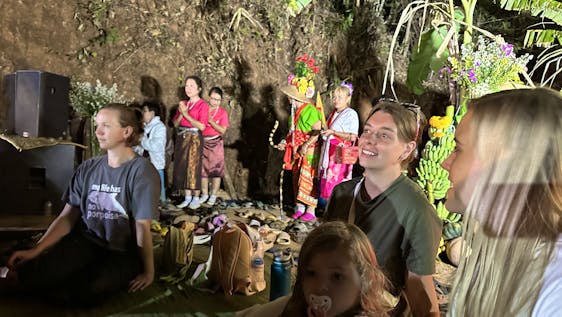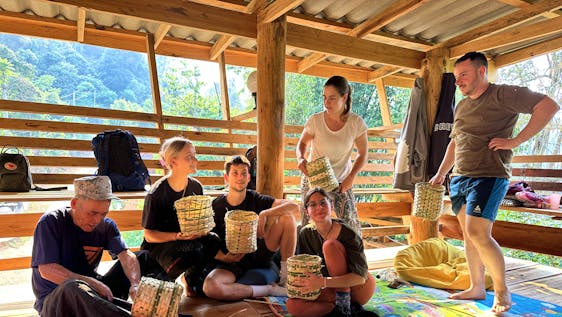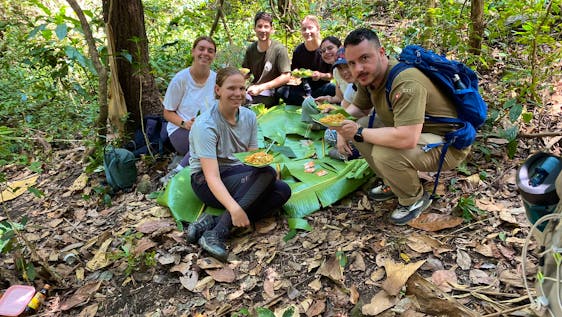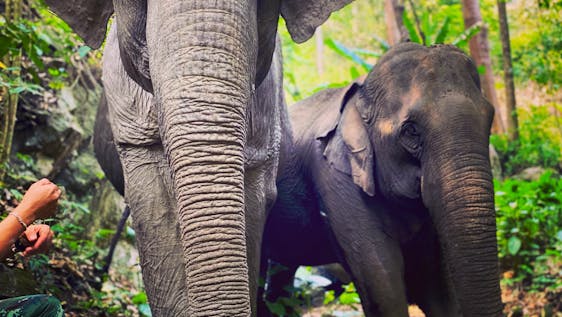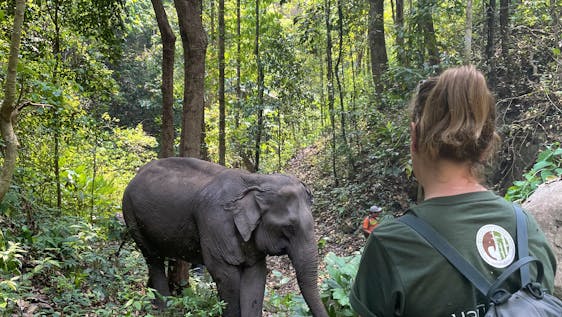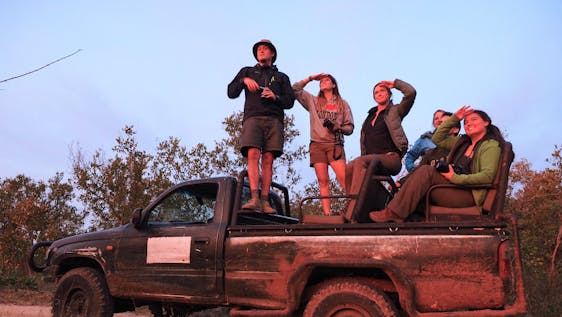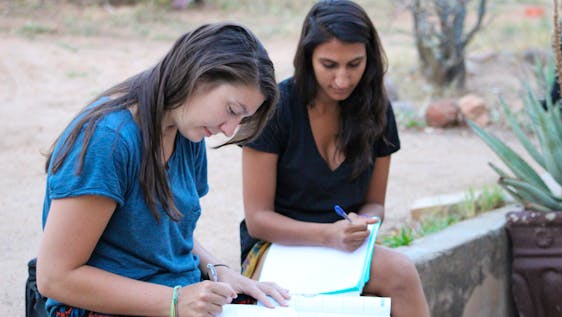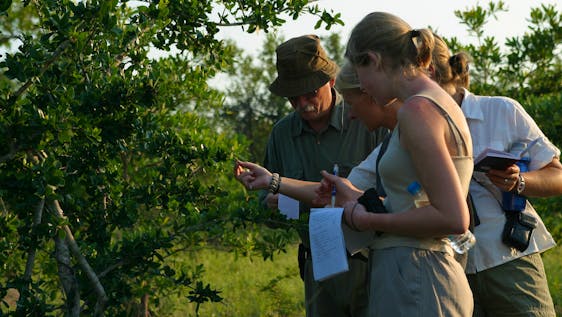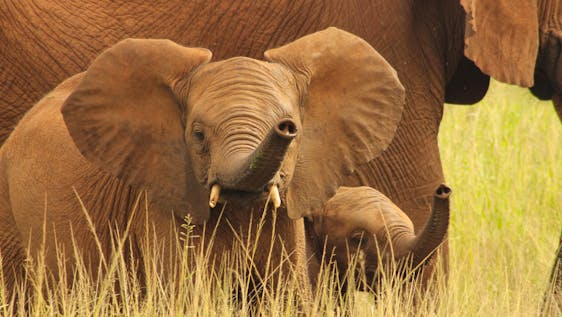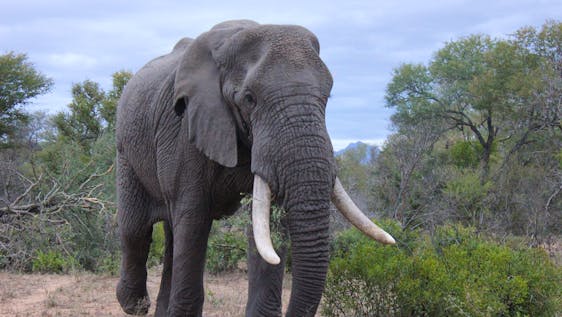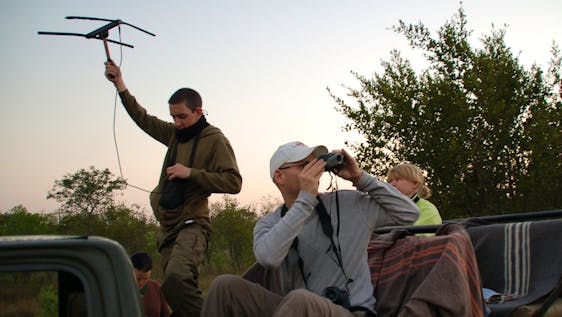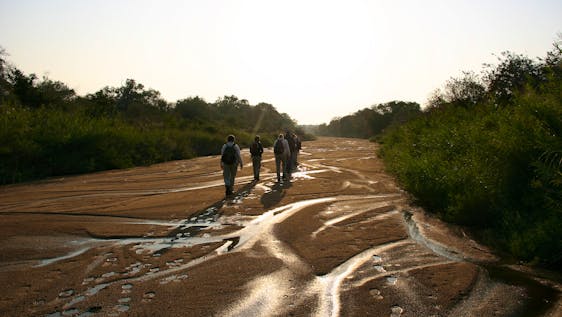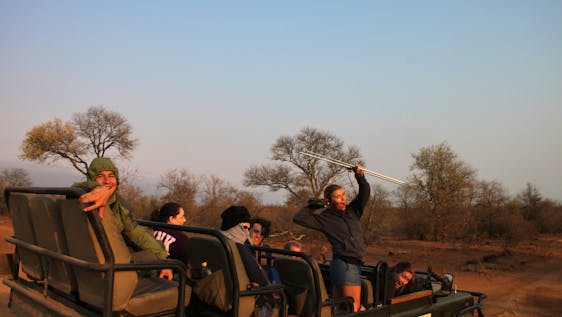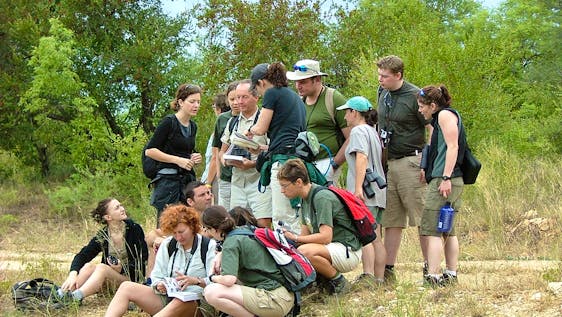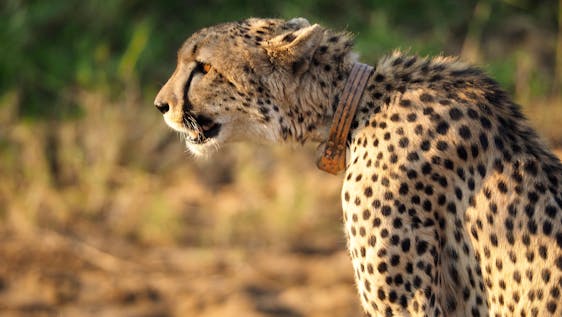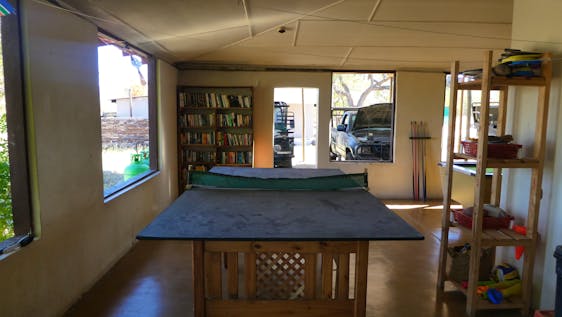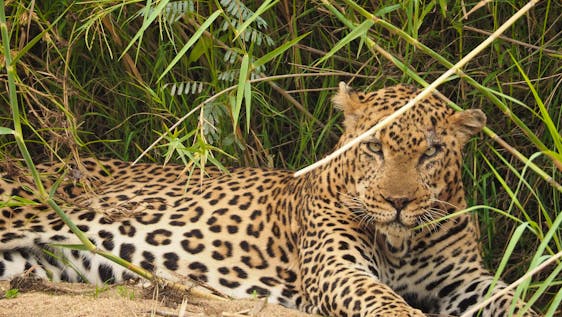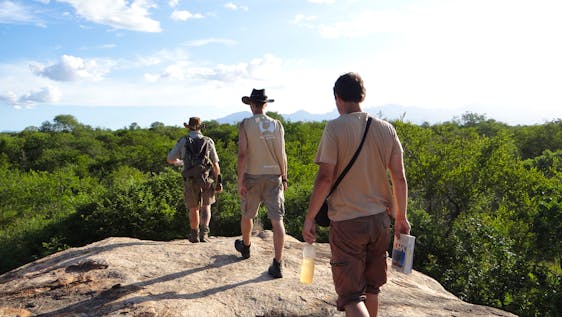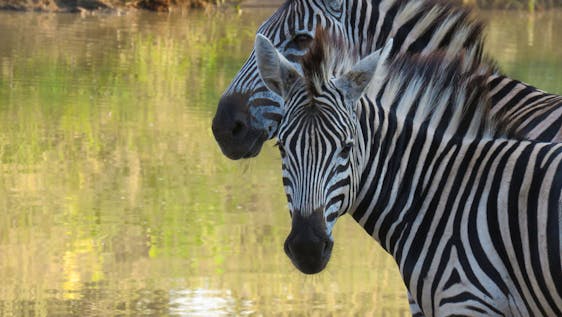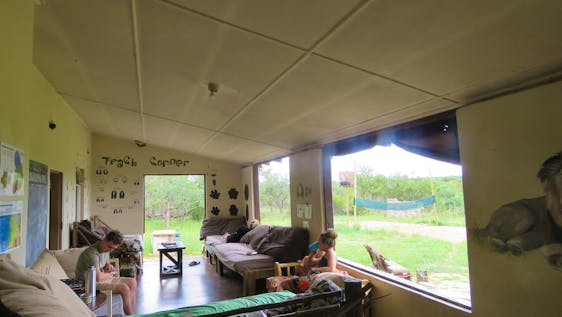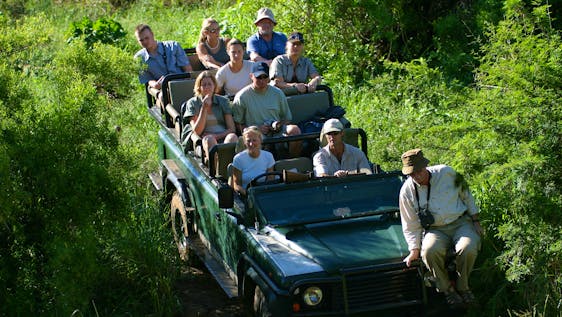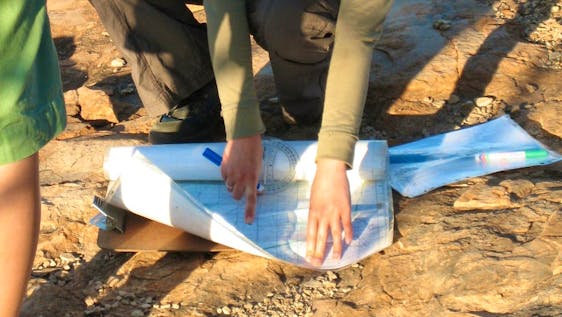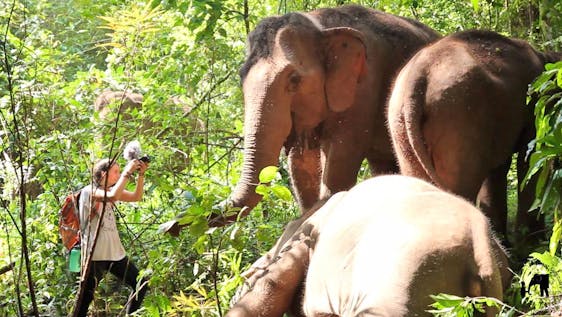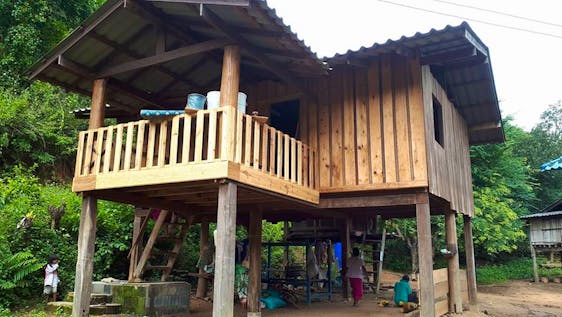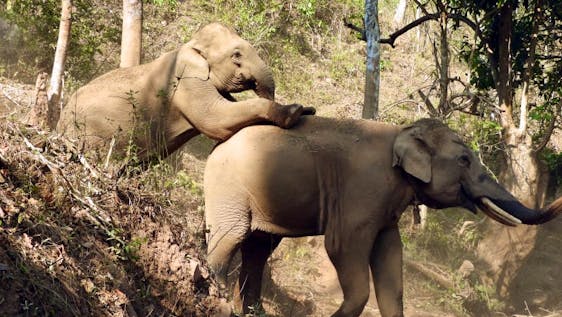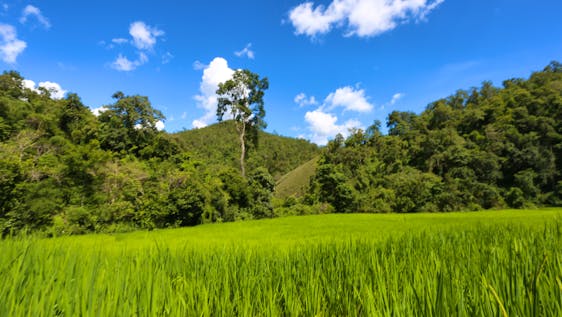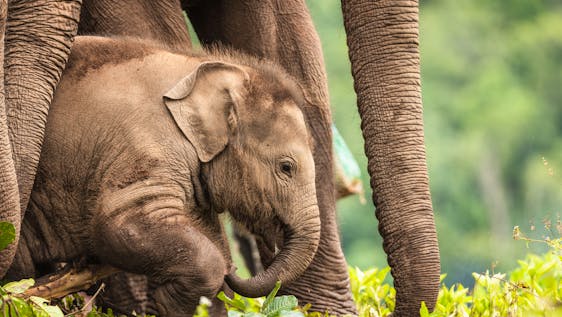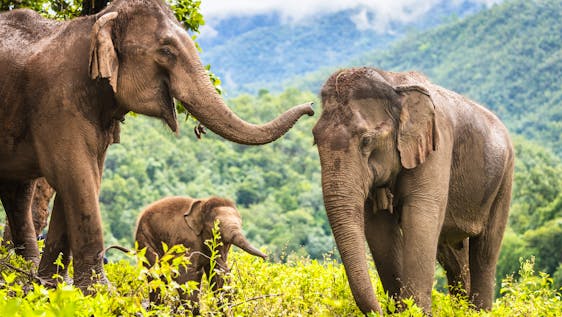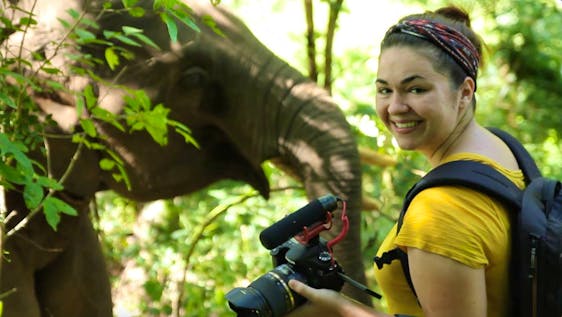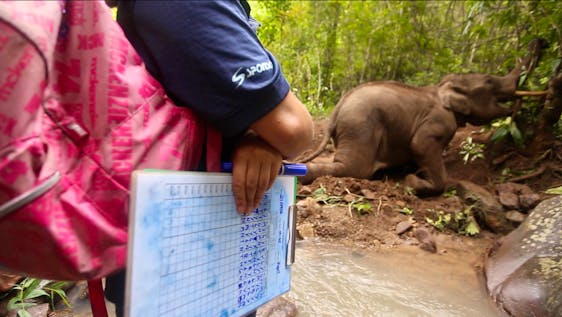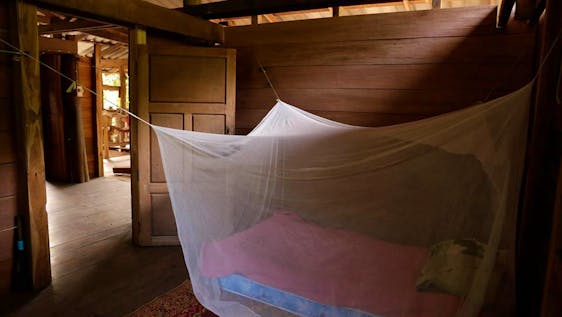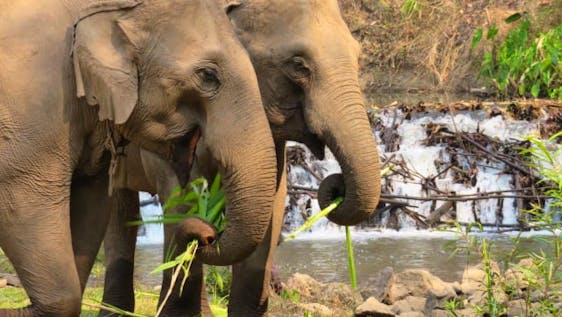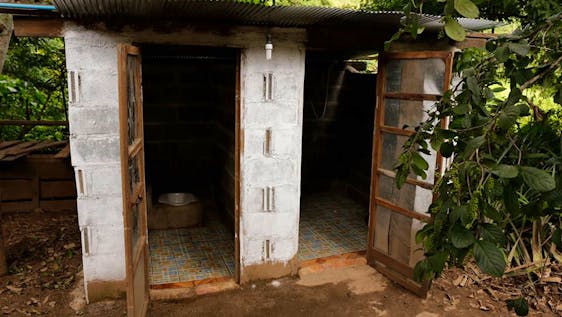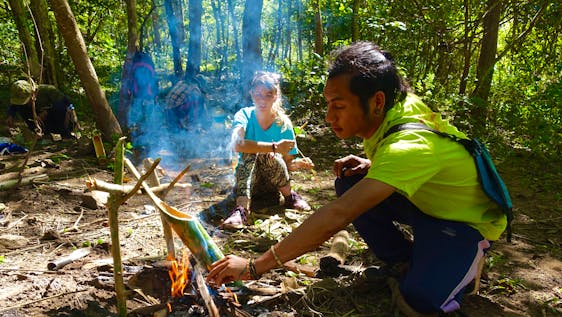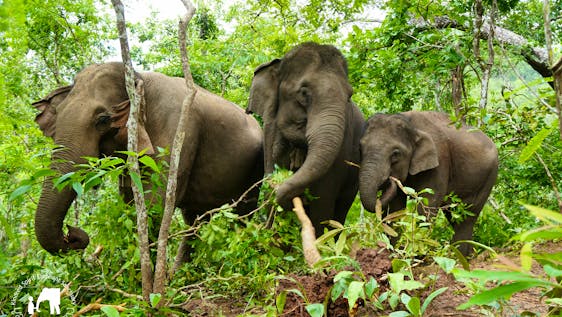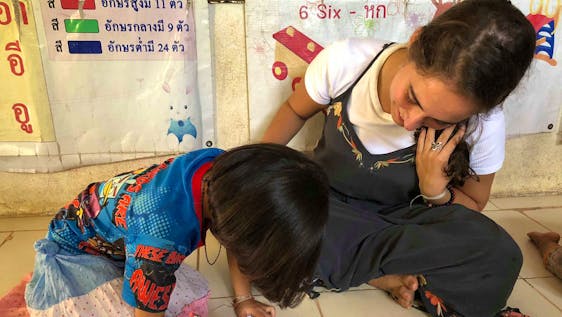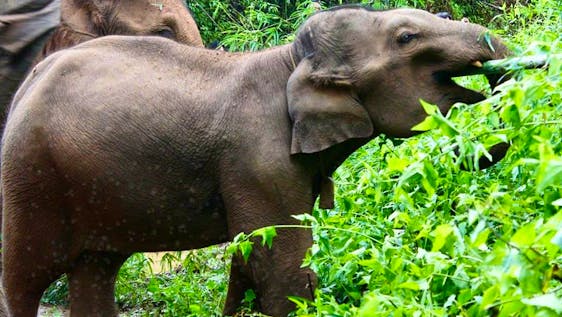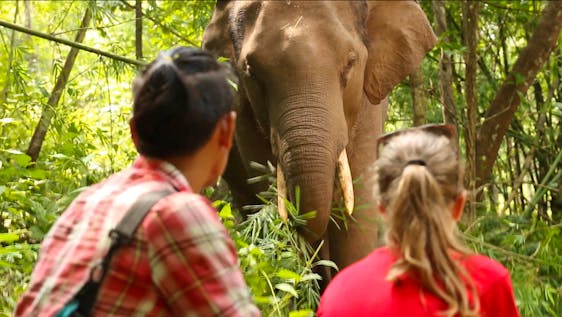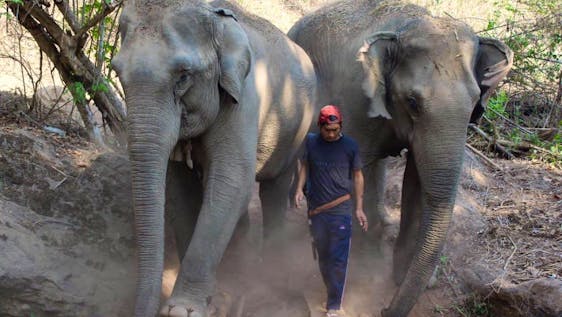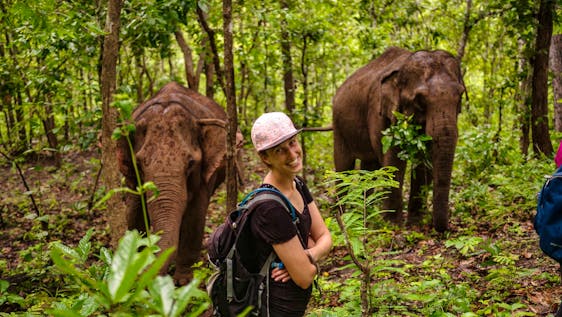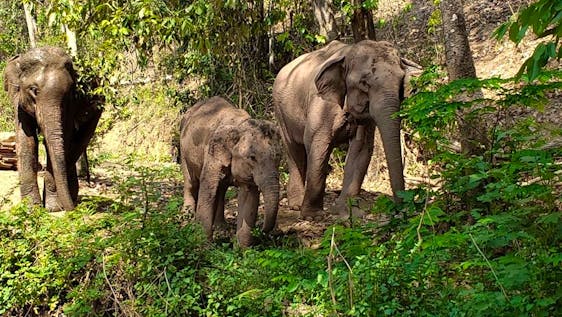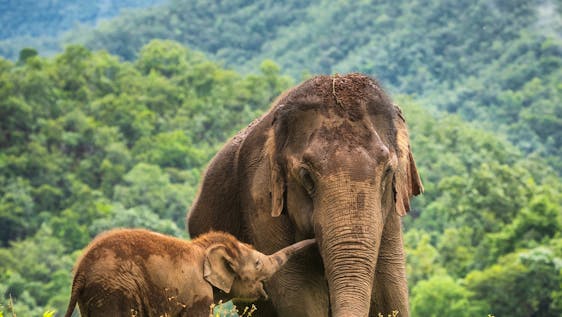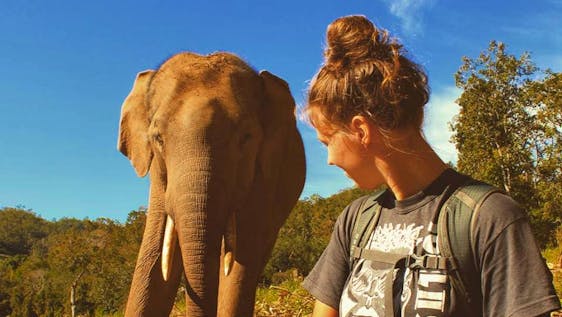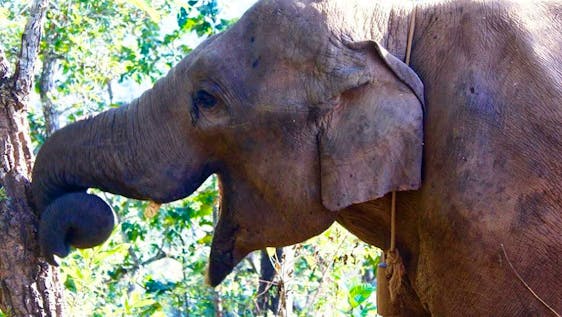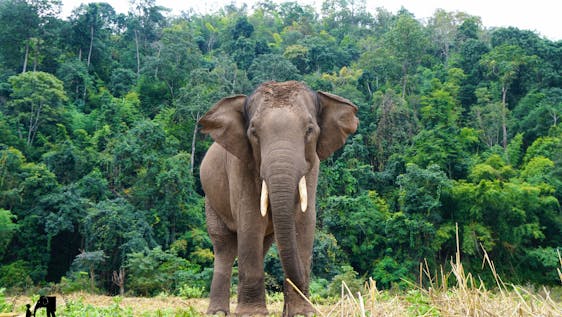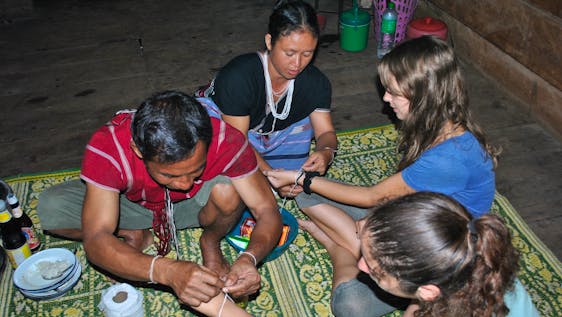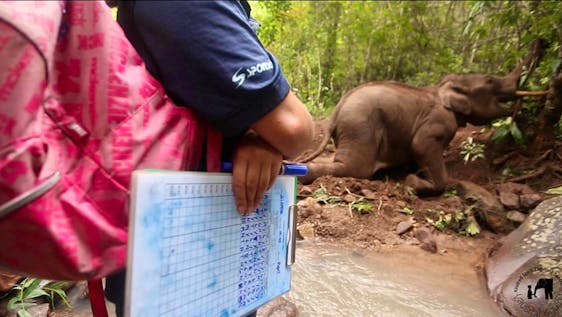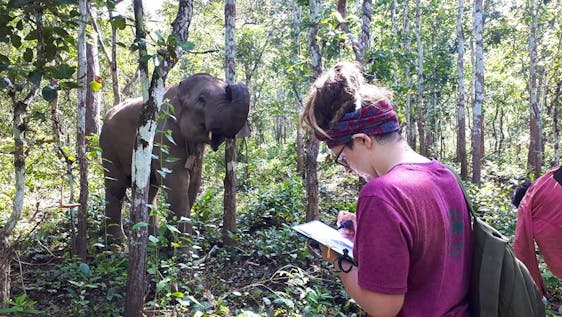Volunteer with Elephants
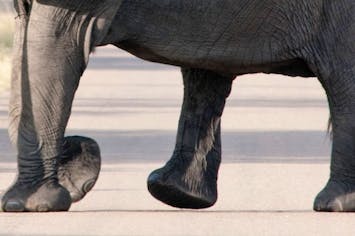
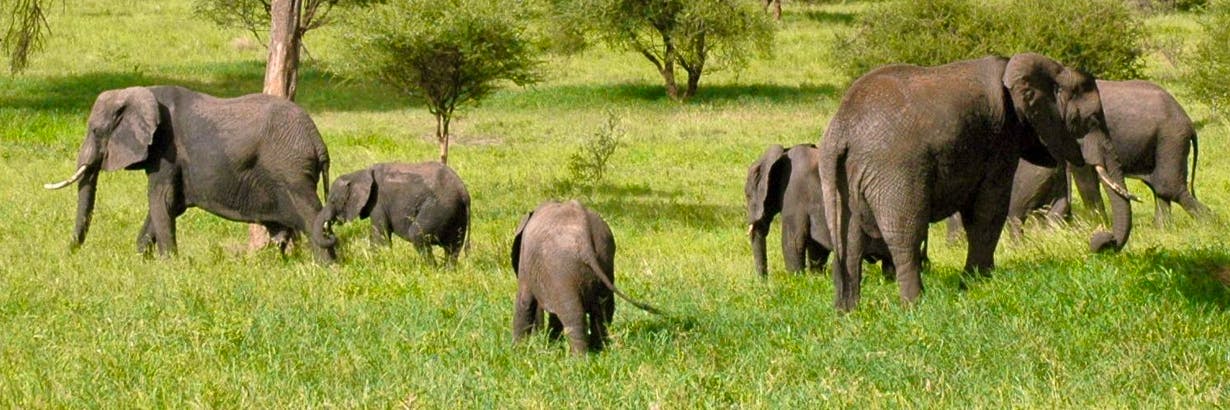
Elephant Sanctuary Programs
Have elephants always fascinated you? We’re not surprised. The largest land mammal on earth has a majestic appearance and their intelligence, sensitivity and social nature makes them all the more interesting to observe in real life. Watching elephants and other wildlife roam free is on most travelers’ bucket lists. As these gentle giants become more endangered, volunteers are needed to support elephant conservation programs and sanctuary projects abroad. South Africa, Thailand, Sri Lanka, and many more marvelous destinations are waiting to be explored!
🐘 How can we save elephants from extinction?
Sadly, this romantic image becomes rarer as elephant numbers decline worldwide. Their natural habitats are shrinking while the threats continue to grow. There are different ways you can help stop this development.
- Avoid buying jewelry and decoration made of ivory.
- Don’t engage in elephant riding.
- Support elephant charities or elephant non-profit organizations.
Most importantly, you can volunteer abroad with elephants in Africa or Asia and actively protect this endangered species. If you have always dreamed of meaningful travel abroad and contributing to a cause, this is your chance. We will give you the information you need about the threats elephants are facing, where you can volunteer for elephant conservation programs, and what your tasks will be. Continue reading to find out all about our volunteer projects.
🐘 What's the Elephant Conservation Status in 2023?
The latest entries in the IUCN red list of endangered species show that African elephants are considered ‘vulnerable’ while Asian elephants are classified as ‘endangered’. It also doesn’t look any better for their subspecies. Populations are decreasing due to different factors, the majority of them inflicted by humans.
A healthy grown-up elephant doesn’t have any natural predators besides humans. But elephants have quite a low reproduction rate, and even though they live for 30 to 50 years in the wild, females only give birth to about four to five calves in their lives. One of the reasons is their 22-month pregnancy, the longest of all mammal pregnancies. The other reason is that they only reach their reproductive age at around 16.
Female elephants and their babies live together in herds, with the oldest female leading as a matriarch. At around 3 years, the male calves leave the herd and roam in isolation. Herds raise their calves together and show many signs of social structures and behaviors, like grieving for their dead, hugging trunks while greeting, and showing affection and compassion.
You may wonder why are elephants important? Elephants are an important part of the ecosystems they live in. Many plants can only spread when they are eaten by elephants.. The seeds germinate in the elephant’s digestive tract and are distributed miles away through their dung. Elephants also create gaps that make room for new plants and encourages tree regeneration.
Besides their value for the environment, elephants have cultural importance in many of their home countries. Saving the gentle giants from extinction is important for several causes. Each of them is reason enough to become active and engaged in elephant conservation abroad. Volunteers, get ready to join a conservation project, elephant orphanage or sanctuary program.
🐘 Why are Elephants endangered?
There are no natural predators to a grown-up elephant. Their size and strength are effective enough against big cats and other hunters. Unfortunately, elephants have a lot that humans can make a profit with:
- ivory trade
- riding abilities
- interesting habitats for agriculture
The most urgent threat to African elephants today is the illegal poaching for the ivory trade. Both male and female African elephants have large tusks, which makes them an attractive target for poachers. And while only a small percentage of Asian elephants have tusks, the same applies to them.
Even though international ivory trade has been banned in 1989, there are still unregulated domestic markets for the ivory trade in the US, China, Thailand, and other countries. In some countries, political conflicts have hindered anti-poaching measurements from succeeding.
Habitat Loss
In both Africa and Asia, elephants are facing an immense habitat loss. With the construction of villages, roads, pipelines, and plantations, elephants are losing their natural roaming grounds. Over the past decades, the decline in habitat has lead to more and more conflicts between humans and elephants. These usually result in the death of the animals that cause trouble for farmers, plantation owners, and people living in small villages.
Capture from the wild
A huge problem in Asia is elephants captured from the wild. It’s estimated that at least 30% of Asia’s elephant population lives in captivity, and numbers are growing. Most elephants are captured as calves and trained to work in the logging or tourism industry. The capture and training methods that follow are extremely cruel and often result in the death of the calves. This development has become a serious threat to wild populations.
Countries like Vietnam or India have already banned the capture of wild elephants. Elephant riding is still a massive tourist attraction in Thailand and Cambodia, however. Many tourists simply aren’t aware of the extremely brutal training and handling the elephants have to suffer.
This is why it’s important to spread the word that elephant riding is a cruel business. Everybody who takes part in it directly supports those responsible for the declining elephant population. Join a volunteer program and raise awareness on this topic.
🐘 What Elephant Species are there?
The two main species are the African elephant and the Asian elephant. The African elephant is slightly larger than its Asian relative and has bigger ears. They also carry tusks that continue to grow throughout their lifetime. Elephants prefer one tusk of the other, kind of like humans that are right- or left-handed. The herds of African elephants roam through 37 different countries in Africa, from South Africa all the way up to central and sub-Saharan Africa.
To give you a better overview, these are all the species and subspecies of elephants roaming our planet:
- Sumatran Elephant
- Bush Elephant
- Sri Lankan Elephant
- Asian Elephant
- Forest Elephant
- Indian Elephant
- Borneo Elephant
- Desert Elephant
- African Elephant
🐘 Which Elephant Species live in Africa?
There are three subspecies of the African elephant that are named after their preferred habitats. The number of African elephants roaming the wilderness is estimated to be around 415.000.
Desert elephants can be found in Namibia and Mali and as their name says, they are desert-dwelling elephants that wander from waterhole to waterhole. On their journeys, they follow traditional routes they have learned from their ancestors.
Bush elephants are the largest out of all the subspecies. Average male individuals are 3.2 meters (10.5 ft) tall and weigh around 6 tonnes. The females are much smaller and lighter, with an average height of 2.6 meters (8.5 ft) and 3 tonnes. Bush elephants can be found in many different countries from south to central and western Africa.
The forest elephant is considerably smaller than his relatives, and it is still unclear if he is a subspecies of the African elephant or should be regarded as its own species altogether. They can be found in the Congo Basin in Central Africa and travel in smaller groups than other subspecies.
🐘 Which Elephant Species live in Asia?
There are four subspecies of the Asian elephant and in contrast to its African relatives, they are named after the country they are found in. The overall population of the Asian elephant is much smaller than the African elephant population. It is estimated that there are about 50.000 individuals left today.
The Sri Lankan elephant is the largest of the Asian subspecies with darker skin color. Their numbers have dropped significantly over the past decades to the point where they are protected by law and killing an elephant is followed by a death sentence.
Indian elephants can be found in many different Asian countries like India, Nepal, Thailand, Cambodia, Laos, and China. They are the only subspecies roaming the mainland, whilst all other subspecies appear on islands. Only a small number of the males grow tusks, and they are considerably smaller than the tusks of the African species.
The Sumatran elephant lives in lush forest habitats of Sumatra and Borneo. The biggest threat to this subspecies is the ongoing destruction of the islands that are also home to a great number of other rare species and unique biodiversity.
They share a home with the Bornean elephant, also called the Pygmy elephant because they are much smaller than the average Asian elephant. Observations show that this subspecies has a very gentle nature and is not as aggressive as some of the other Asian subspecies can be.
🐘 Which are the best places to work at an Elephant Sanctuary?
Now that you have learned all about the different elephant species and the threats they are facing, the next question is how are elephants being protected? You might want to dive right in and become an elephant conservation volunteer. This is great because elephant conservation projects and wildlife programs in both Asia and Africa need the helping hands of international volunteers.
The initial decision between Africa and Asia might be the easiest one here, surely one of these continents has personally always been a little bit more appealing to you. If you are indecisive about the destination of your volunteer journey, the following information might be helpful for you.
🐘 How to Volunteer with Elephants in Africa?
When volunteering with elephants in Africa, it is very likely that you will get to see the other four of the Big Five as well. South Africa and Namibia are great destinations for elephant volunteering and famous for its stunning wildlife.
and much more when you are out in the wild observing elephants.
Many of the elephant orphanages and sanctuaries are located in South Africa. The Kruger National Park in the north of the country is a great location where you can become an elephant sanctuary volunteer, but there are many projects close to the southern coast as well.
South Africa is a hotspot for any kind of wildlife volunteering and tourism. If you want to combine your volunteering with some sightseeing on the weekends, then South Africa is the perfect place for your volunteer vacation.
If you are looking for a less touristy place to volunteer with elephants, you might want to go further north to Zimbabwe, Malawi or Kenya. While these countries share their fascinating wildlife with South Africa, they are less visited and developed. Illegal poaching is more common here because people are very poor and the small villages are more vulnerable to elephant crossings. If you are ready to get your hands dirty and lead a simple camp life without the internet and other luxuries for a while, this is the right place for you to make a difference.
🐘 How to Volunteer with Elephants in Asia?
While Asia might not offer the elephant protection programs where you can go on safari in your free time, the natural beauty and the fascinating cultures will leave no room for second thoughts. The volunteer project with elephants in Asia is varied and you can also choose between popular and touristy destinations and remote and quiet areas.
When you think of travel hotspots in Asia, Thailand might be the first country that comes to your mind. Unfortunately, many tourists that travel to Thailand have one specific thing on their list: riding an elephant. You already know by now that riding elephants is animal cruelty and needs to stop to protect elephants from further harm and also to guarantee a steady growth of the wild populations.
If you decide to be an elephant conservation volunteer in Thailand, Chiang Mai is the place to go. As a tourist hotspot, there are many elephant sanctuary programs in Chiang Mai that have saved elephants from the riding industry and have given them a safe home. Tourists are welcome in the sanctuary to observe the elephants and educate them about the problems of elephant tourism.
Touristy places like Chiang Mai or Thailand aren't for everyone. If you prefer more remote areas where you can experience the traditional way of life, we highly recommend Sri Lanka as your destination abroad to work with elephants. The small island south of India has a large population of free-roaming elephants in the jungles. Dive right into this paradise and become their silent observer.
Elephants are protected by law in Sri Lanka, but they also play a big part in the Sri Lankan culture and have been trained for different religious and domestic purposes. That is why there are elephant sanctuary projects caring for the individuals that are either too old to serve their original purpose, disabled or chronically ill. A sanctuary project allows volunteers to have closer contact with the elephants because many elephants have been in captivity for so long and are used to human interaction.
Another place to volunteer with elephants in Asia is Borneo. This biodiverse paradise is home to Sumatran elephants and the Borneo pygmy elephants, that almost look like the stuffed-animal version of their larger relatives. If you’re looking for lush rainforests, pure nature, and breathtaking wildlife, then Borneo is the right place for volunteering abroad.
Whether you go to a project in Thailand, South Africa or Sri Lanka, you will have a positive impact on the conservation of elephants.
🐘 How to work with Elephants?
There are many ways to protect and save elephants: not all projects work in the same way. Depending on what you are looking for, this introduction to the tasks and benefits of elephant volunteering will be helpful for you to find the right program. Whether you want to observe elephants in their natural habitat or prefer working for an elephant, there will be a program, elephant orphanage or charity that matches your expectations and skillset.
Elephant volunteer organizations or non-profits and elephant charities have a different focus. They all have the protection of the elephant species at heart but go about it in a different way. Volunteers need to do their research and find out what kind of project they want to be part of.
🐘 How to volunteer with Elephants?
Depending on which elephant conservation project you’re joining, there are different tasks you’ll be doing. If you are working for a project that focuses on researching and observing wild elephant populations, your main tasks will be to observe the herds and collect data..
Elephant Conservation - Research
Volunteers and researchers usually live at a base camp and conduct game drives and foot walks for their observation purposes. Sometimes you will camp out in the wild or be stationed at a hide near a waterhole where you get to see all kinds of animals next to elephants.
Although it is necessary that volunteers are well prepared for these tasks, there will be lessons and presentations. These will inform you about how to do research work, how to approach dangerous animals on foot and how to behave in certain situations. You may also spend some time at a computer, transferring the collected data and putting together reports.
Maintaining the camps and vehicles is another important task that you will do at an elephant conservation volunteer program. Some of your other tasks may include:
- setting up camera and video traps
- engaging in habitat work like alien plant removal or bush clearing
- doing night patrols and anti-poaching patrols
- learning to track animals and identify spoors
- teaching and educating local communities on your efforts
- administration work at the elephant sanctuary
Another part of working with free-roaming elephants is avoiding human-elephant conflict. Knowing the common routes of elephant herds can be the first step. Other ways are educating locals about the behavior of elephants and finding ways to protect the locals’ houses and harvests from them.
While building fences is one solution, there are other natural ways that can help keep elephants at a distance. Elephants don’t like the scent of chilies, for example, so placing hot chilies at the borders of fields and villages can be a way to keep the giant grey visitors away.
Elephant Rescue - Sanctuary Programs
If you would rather work for an elephant rescue organization and rescue elephants from captivity and abuse in the tourism or logging industry, your tasks will look very different.
Some of the elephants will be able to live in a semi-wild protected area without human contact. Your main tasks will be to patrol and maintain the area, control fences and clean out any enclosures. If the elephant rescue project welcomes tourists to observe their elephants, volunteers could be responsible for showing them around and explaining your work to them. Other elephants might be so used to human contact that you will do a lot of hands-on work in the sanctuary. Your volunteer tasks will consist of:
- feeding and watering the elephants
- cleaning and preparing food
- keeping the sanctuary clean and maintaining fences and enclosures
- walking elephants to nearby waterholes or rivers
- educating visitors about elephants
No matter what your tasks are and how close you get to the elephants, it’s very important to keep in mind that these elephants are still wild animals. Always treat them with respect and the necessary caution to prevent yourself and the elephant from getting in danger.
🐘 Why should I work at an Elephant Sanctuary?
Seeing elephants roam wild in their natural habitat is a once-in-a-lifetime experience you’ll never forget. That’s reason enough for many people to pack their bags and volunteer abroad with elephants.
But there are plenty of other reasons why volunteering with elephants abroad is the right choice for you.
Practical Experience
If you’re interested in biology or veterinary medicine, a volunteer program working with elephants could be a great fit. You will gain hands-on experience on the project and get an insight into the daily work of trained wildlife experts and biologists.
What are the Career Benefits of Volunteering?
This will certainly come in handy at a later point in your career. Being able to list this kind of work experience on your CV is another bonus, even if you are not pursuing a career in this field. It shows you are capable of hard work and are motivated to volunteer your free-time to a meaningful cause.
Growth Opportunity
Depending on where you choose to do volunteer work with elephants, you may refine your English language skills (if English isn’t your first language). Immersing yourself in a foreign culture and living abroad will definitely make you grow as a person and give you a different perspective on life.
Meeting New People
The best part is that you’ll be surrounded by like-minded individuals that share your passion for elephant and wildlife conservation. After working and living together for a while, these people might even become your close friends!
Have Fun
Let’s not forget that the time you spend as an elephant conservation volunteer will also be incredibly fun! You will enjoy all the perks of living in nature, like seeing wildlife up close, getting back to your roots and facing new challenges.
We hope we've given you some idea on how to help elephants. If you think joining an elephant conservation volunteer program is just what you’re looking for, get started right now! We would love to help you find the right elephant volunteer project for you!
Start planning your elephant volunteer program and take your trip to an elephant sanctuary in South Africa, Sri Lanka or Thailand!
 Activities
Activities
 Rhino Conservation
Rhino Conservation
 Wildlife Conservation
Wildlife Conservation
 Animal
Animal
 Africa
Africa
 Lion Conservation
Lion Conservation
 Antelope Conservation
Antelope Conservation
 Anti Poaching
Anti Poaching
 Bush Elephant
Bush Elephant
 Giraffe Conservation
Giraffe Conservation
 African Elephant
African Elephant
 Southern Africa
Southern Africa
 South Africa
South Africa
 Southwest African Lion
Southwest African Lion
 White Rhino
White Rhino
 Leopard Conservation
Leopard Conservation
 African Leopard
African Leopard
 Hotspots
Hotspots
 Planting Trees
Planting Trees
 Hyena Conservation
Hyena Conservation
 Spotted Hyena
Spotted Hyena
 Cheetah Conservation
Cheetah Conservation
 Southern Giraffe
Southern Giraffe
 Bengal Tiger
Bengal Tiger
 Zebra Conservation
Zebra Conservation
 Buffalo Conservation
Buffalo Conservation
 African Buffalo
African Buffalo
 Vegan
Vegan
 Asia
Asia
 Asian Elephant
Asian Elephant
 Eastern Africa
Eastern Africa
 Zimbabwe
Zimbabwe
 South African Cheetah
South African Cheetah
 Northwest African Cheetah
Northwest African Cheetah
 Reptile Conservation
Reptile Conservation
 Crocodile
Crocodile
 South East Asia
South East Asia
 Mountain Zebra
Mountain Zebra
 Kudu
Kudu
 National Park
National Park
 Premium
Premium
 Thailand
Thailand
 Bushbuck
Bushbuck
 Impala
Impala
 Animal Sanctuary
Animal Sanctuary
 Safari
Safari
 Bangkok
Bangkok
 Port Elizabeth
Port Elizabeth
 Plains Zebra
Plains Zebra
 Chiang Mai
Chiang Mai
 Monkey Conservation
Monkey Conservation
 Elephant Research
Elephant Research
 Southern Asia
Southern Asia
 Sri Lankan Elephant
Sri Lankan Elephant
 Sri Lanka
Sri Lanka
 Volunteer and Travel
Volunteer and Travel
 Voluntourism
Voluntourism
 Delhi
Delhi
 Monastery
Monastery
 Himalaya
Himalaya
 Jaipur
Jaipur
 Kathmandu
Kathmandu
 Bear Conservation
Bear Conservation
 Yoga
Yoga
 Indian Elephant
Indian Elephant
 Indigenous cultures
Indigenous cultures
 Victoria Falls
Victoria Falls
 Horse Trekking
Horse Trekking
 Gibbon
Gibbon
 Civet
Civet
 Macaque
Macaque
 African Wild Dog Conservation
African Wild Dog Conservation
 Kruger National Park
Kruger National Park
 South African Hippo
South African Hippo
 Otter Conservation
Otter Conservation
 Asian Wildcat
Asian Wildcat
 Giant Otter
Giant Otter
 Namibia
Namibia
 Desert Elephant
Desert Elephant
 Cambodia
Cambodia
 Reforestation
Reforestation
 Intern Abroad
Intern Abroad
 Photography Internship
Photography Internship
 NGO Support
NGO Support
 Marketing and IT
Marketing and IT
 Caracal Conservation
Caracal Conservation
 Pangolin Conservation
Pangolin Conservation
 Nyala
Nyala
 Tubulidentata Conservation
Tubulidentata Conservation
 Aardvark
Aardvark
 Black-backed Jackal
Black-backed Jackal
 Badger Conservation
Badger Conservation
 Caracal
Caracal
 Transvaal Lion
Transvaal Lion
 Laos
Laos
 Kumasi
Kumasi
 Ghana
Ghana
 Western Africa
Western Africa
 Serengeti
Serengeti
 Tanzania
Tanzania
 Arusha
Arusha
 Malawi
Malawi
 Günthers Dik-Dik
Günthers Dik-Dik
 Johannesburg
Johannesburg
 Bird Conservation
Bird Conservation
 Indian Leopard
Indian Leopard
 Psychology Internship
Psychology Internship
 Sloth Bear
Sloth Bear
 Nursing Internship
Nursing Internship
 Physical Therapy Internship
Physical Therapy Internship
 Dental Internship
Dental Internship
 India
India
 Animal Shelter
Animal Shelter
 Eagle
Eagle
 Vervet Monkey
Vervet Monkey
 Veterinary Training
Veterinary Training
 Cats
Cats
 Hiking
Hiking
 Sea Turtle Conservation
Sea Turtle Conservation
 Dog
Dog
 Asiatic Softshell Turtle
Asiatic Softshell Turtle
 Baboon
Baboon
 Ecological Farming
Ecological Farming
